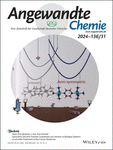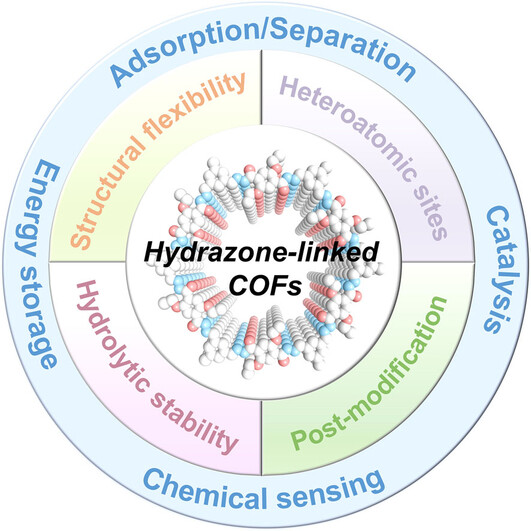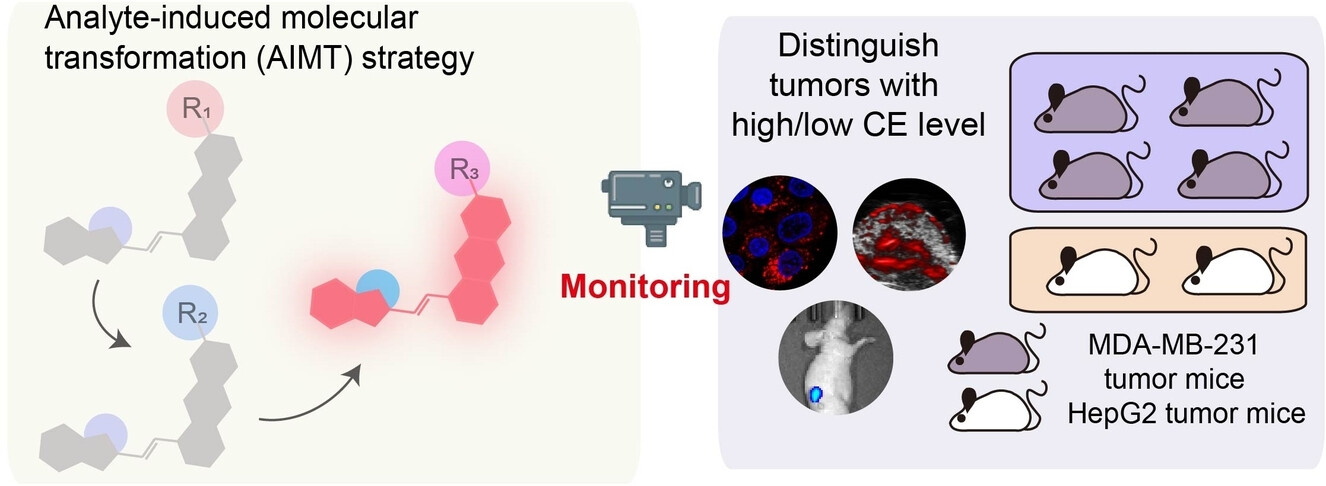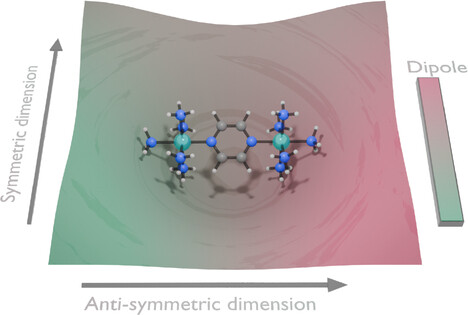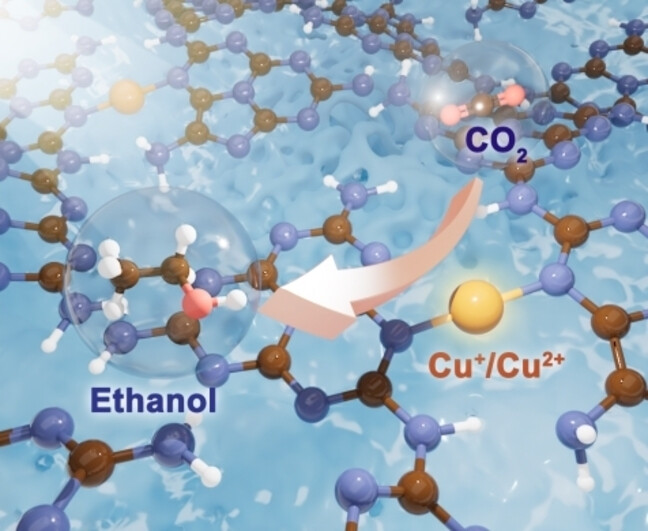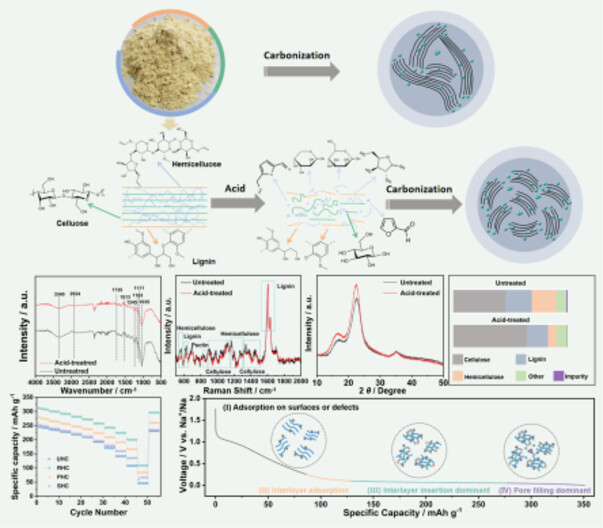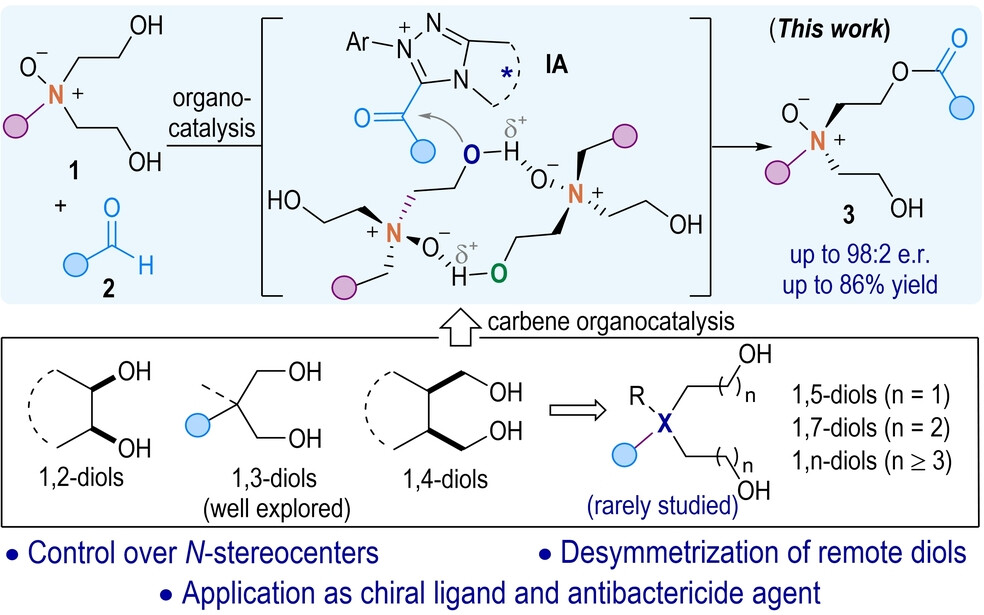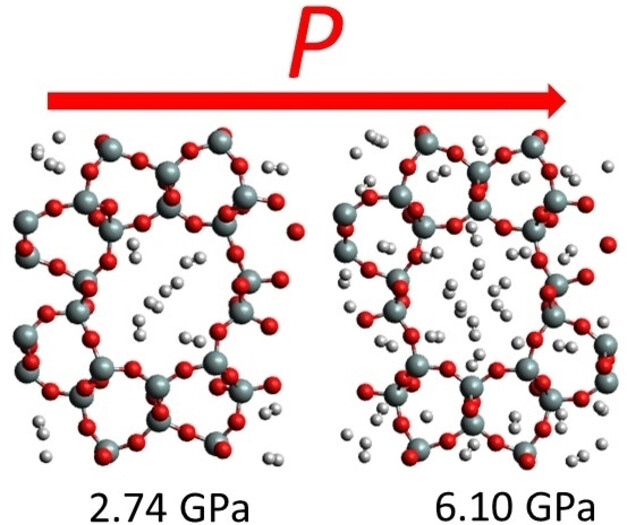Journal list menu
Export Citations
Download PDFs
Cover
Titelbild: Symmetric Electron Transfer Coordinates are Intrinsic to Bridged Systems: An ab Initio Treatment of the Creutz–Taube Ion (Angew. Chem. 31/2024)
- First Published: 03 July 2024
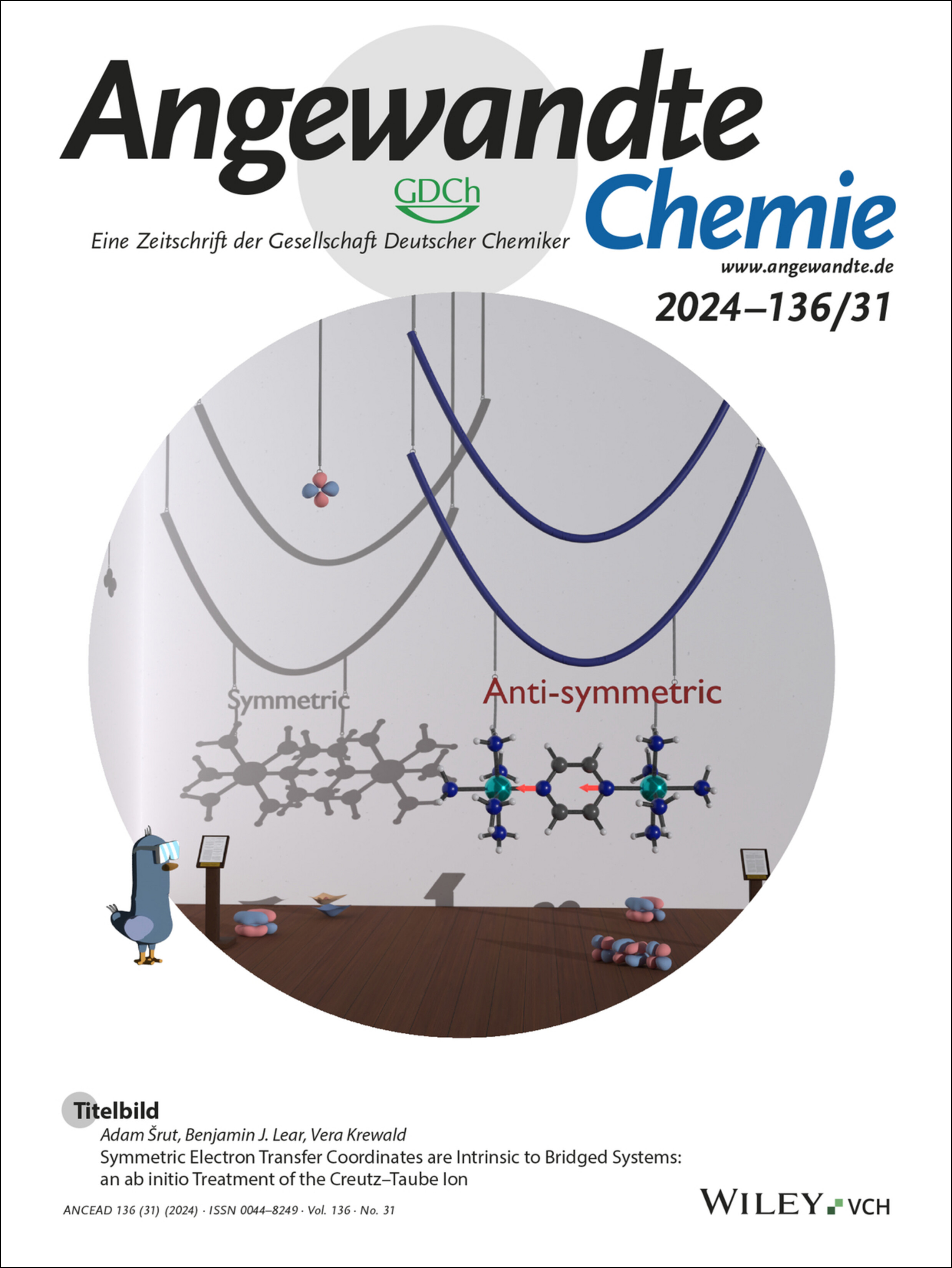
In mixed-valent systems , an anti-symmetric motion leads to electron localisation on or electron transfer between the redox centers. In their Research Article (e202404727), Adam Šrut, Benjamin J. Lear and Vera Krewald et al. show that additionally, a symmetric motion is present in bridged systems: it is responsible for the characteristic shape of the inter-valence charge transfer band. The close relationship between the two motions is represented by one surface being the shadow of the other.
Innentitelbild: Are Redox-Active Centers Bridged by Saturated Flexible Linkers Systematically Electrochemically Independent? (Angew. Chem. 31/2024)
- First Published: 11 July 2024
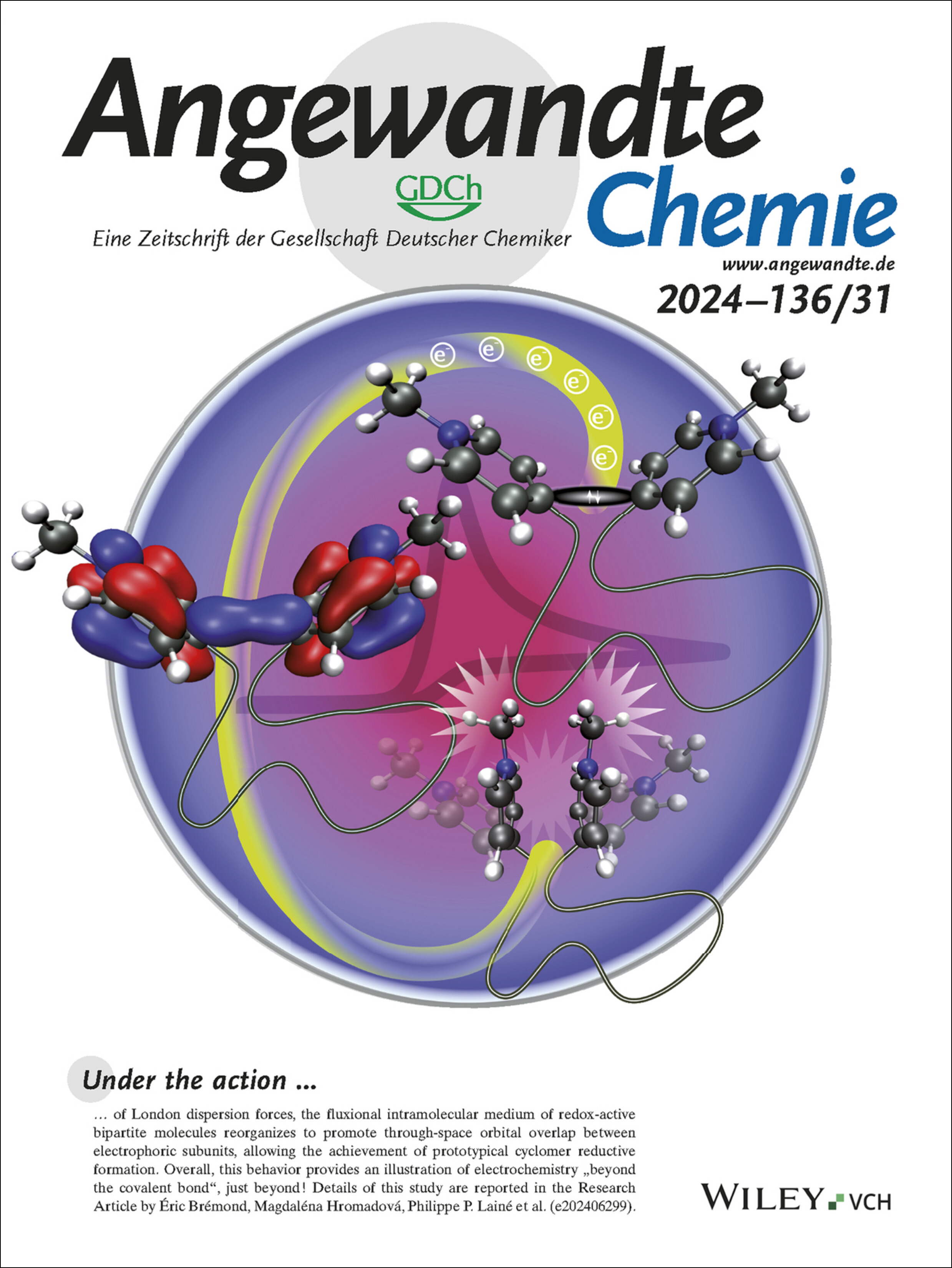
Under the action of London dispersion forces, the fluxional intramolecular medium of redox-active bipartite molecules reorganizes to promote through-space orbital overlap between electrophoric subunits, allowing the achievement of prototypical cyclomer reductive formation. Overall, this behavior provides an illustration of electrochemistry “beyond the covalent bond”, just beyond! Details of this study are reported in the Research Article by Éric Brémond, Magdaléna Hromadová, Philippe P. Lainé et al. (e202406299).
Innenrücktitelbild: Non-Covalent and Covalent Binding of New Mixed-Valence Cage-like Polyoxidovanadate Clusters to Lysozyme (Angew. Chem. 31/2024)
- First Published: 09 July 2024
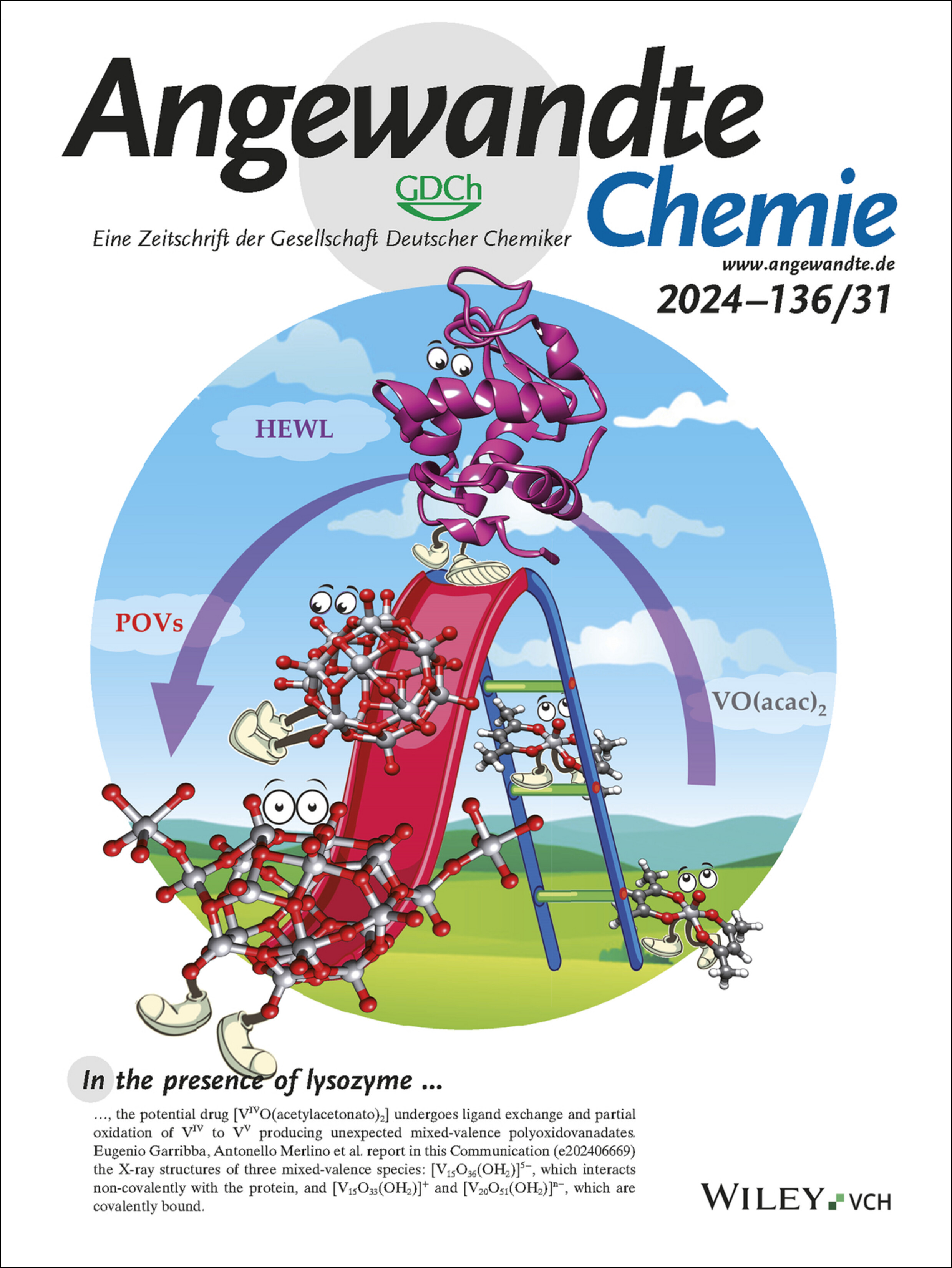
In the presence of lysozyme , the potential drug [VIVO(acetylacetonato)2] undergoes ligand exchange and partial oxidation of VIV to VV producing unexpected mixed-valence polyoxidovanadates. Eugenio Garribba, Antonello Merlino et al. report in this Communication (e202406669) the X-ray structures of three mixed-valence species: [V15O36(OH2)]5−, which interacts non-covalently with the protein, and [V15O33(OH2)]+ and [V20O51(OH2)]n−, which are covalently bound.
Rücktitelbild: Considerable Piezochromism in All-Inorganic Zero-Dimensional Perovskite Nanocrystals via Pressure-Modulated Self-Trapped Exciton Emission (Angew. Chem. 31/2024)
- First Published: 03 July 2024
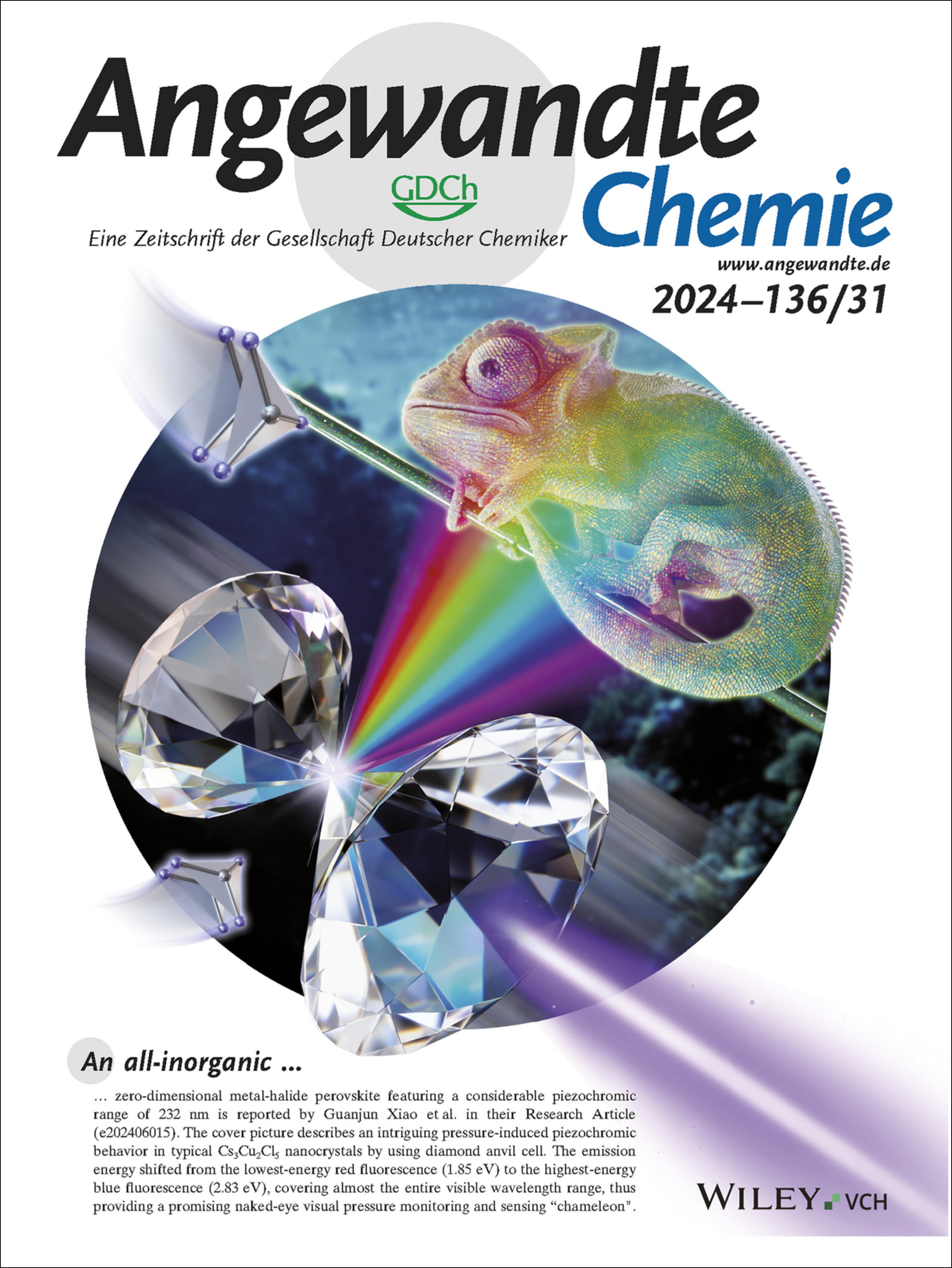
An all-inorganic zero-dimensional metal-halide perovskite featuring a considerable piezochromic range of 232 nm is reported by Guanjun Xiao et al. in their Research Article (e202406015). The cover picture describes an intriguing pressure-induced piezochromic behavior in typical Cs3Cu2Cl5 nanocrystals by using diamond anvil cell. The emission energy shifted from the lowest-energy red fluorescence (1.85 eV) to the highest-energy blue fluorescence (2.83 eV), covering almost the entire visible wavelength range, thus providing a promising naked-eye visual pressure monitoring and sensing “chameleon".
Graphisches Inhaltsverzeichnis
Berichtigung
Berichtigung: Correction to “Elaborate Modulating Binding Strength of Intermediates via Three-component Covalent Organic Frameworks for CO2 Reduction Reaction”
- First Published: 11 June 2024
Berichtigung: Correction to “A Golgi-Targeted Platinum Complex Plays a Dual Role in Autophagy Regulation for Highly Efficient Cancer Therapy”
- First Published: 21 June 2024
Introducing …
Francesco De Bon
- First Published: 25 June 2024

“I would have liked to have discovered one of the 10 artificial elements discovered by Glenn Theodore Seaborg and collaborators, such as plutonium or americium… My secret/not-so-secret passion is watching police procedural dramas. I′ve watched so many that I am seriously considering enrolling, sooner or later, in the MSc program in Forensic Chemistry at the University of Coimbra…” Find out more about Francesco De Bon in his Introducing… Profile.
Alessandro Bismuto
- First Published: 25 June 2024

“My favorite name theorem is Fermat's last theorem, probably one of the most complicated mathematical challenges of the last four centuries. I also love that he did not provide any demonstration as it would not have fit the margins … The most important quality of a mentor is adaptability—every student is different, and different is the way to them …” Find out more about Alessandro Bismuto in his Introducing… Profile.
Kurzaufsatz
Covalent Organic Frameworks
Thickness-Driven Synthesis and Applications of Covalent Organic Framework Nanosheets
- First Published: 10 May 2024
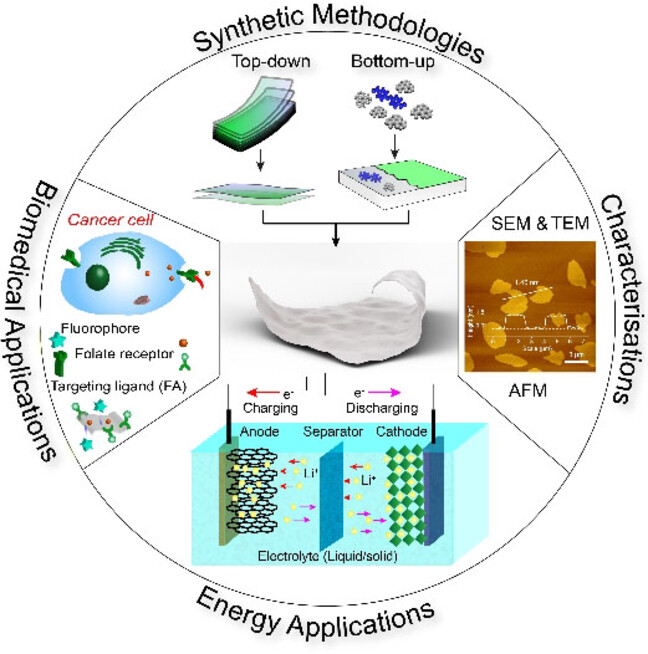
This Minireview discusses the progress in covalent organic framework nanosheets, with a focus on studies that compare the performance of covalent organic nanosheets (CONs) with covalent organic frameworks (COFs) by demonstrating the impact of thickness and lateral growth of the nanosheets. The applications of CONs in components of batteries, as well as in biomedical applications, sensing, and heterogeneous catalysis are highlighted.
Stereochemistry
Stereoinvertive SN1 Through Neighboring Group Participation
- First Published: 19 May 2024

A novel classification for stereoinvertive nucleophilic substitution through neighboring group participation is presented. Three disctinct modes have been identified: Inversion via Rearrangements, Invertive Intermediate-Retentive Ring-opening and Retentive Intermediate-Invertive Substitution. In each instance, we have elucidated the fundamental principles underlying the stereochemistry and provided representative examples to illustrate the concepts.
Nichtkovalente Wechselwirkungen
Nichtkovalente Organokatalyse mit Halogen-, Chalkogen-, Pniktogen- und Tetrelbrücken: neuere Entwicklungen
- First Published: 10 May 2024

Neuere Entwicklungen zur Nutzung nicht-transienter nicht-kovalenter Wechselwirkungen auf Basis der Elemente der Gruppen 14–17 in der organischen Synthese und der Organokatalyse werden erörtert. Während Halogen- und Chalkogenbrücken in diesem Bereich inzwischen eindeutig etabliert sind, beginnen sich Anwendungen von Pniktogen- und insbesondere Tetrelbrücken erst abzuzeichnen.
Aufsatz
Covalent Organic Frameworks
Forschungsartikel
Electrocatalysis
Electrocatalytic Transfer Hydrogenation of 1-Octene with [(tBuPCP)Ir(H)(Cl)] and Water
- First Published: 17 May 2024
![Electrocatalytic Transfer Hydrogenation of 1-Octene with [(tBuPCP)Ir(H)(Cl)] and Water](/cms/asset/77f9779d-a4d6-4779-a3d5-ca7d889ec314/ange202317844-toc-0001-m.jpg)
We report the quantitative electro-hydrogenation of unactivated alkenes with H2O in neutral or even alkaline conditions. Electro-hydrogenation is typically driven by H+ reduction in acidic media to generate reactive metal-hydrides, which then either hydrogenate or react with H+ to liberate H2 in a parasitic process. Our work shows that H2 evolution can be suppressed by forming metal-hydrides via oxidative addition of H2O instead of H+ reduction.
Bioorthogonal Chemistry
Inorganic Chemistry | Hot Paper
NHC-Supported 2-Sila and 2-Germavinylidenes: Synthesis, Dynamics, First Reactivity and Theoretical Studies
- First Published: 06 February 2024

NHC-supported 2-tetrelavinylidenes 1-E were prepared by a C(NHC) transfer reaction of the diazoolefin (NHC)CN2 with (E)-(Tbb)BrE=EBr(Tbb). Structural, spectroscopic and theoretical studies reveal an interesting electronic structure of the 2-tetrelavinylidenes 1-E, which display stereodynamics in solution and undergo an 1,2-addition reaction with GeBr2(1,4-dioxane) across the E=C multiple bonds forming NHC-supported bromogermynes 2-EGe.
Covalent Ligands
Potent Immunomodulators Developed from an Unstable Bacterial Metabolite of Vitamin B2 Biosynthesis
- First Published: 28 April 2024

A transient bacterial metabolite that potently activates T lymphocytes called MAIT cells is too unstable in water to fully exploit in biology. Here, we describe highly stable and extremely potent new immunostimulants, immunosuppressants, and probes that shed new light on the mechanism of MAIT cell activation. These new chemical tools offer fresh insights for designing novel vaccines, anticancer, anti-inflammatory, and anti-infective drugs.
Asymmetric Catalysis
Catalytic (4+2) Annulation via Regio- and Enantioselective Interception of in-situ Generated Alkylgold Intermediate
- First Published: 22 May 2024

An enantioselective (4+2) annulation of N-propargylamides and α,β-unsaturated imines/ketones has been accomplished under gold-complex and chiral quinine-derived squaramide synergetic catalysis, providing chiral tetrahydropyridines/dihydropyrans with high efficiency and selectivity. This method complements the (4+2) annulation of allene reagents via a formal cycloaddition on internal π-bond, which is challenging and remains elusive.
Biomaterials | Hot Paper
Engineering Low Volume Resuscitants for the Prehospital Care of Severe Hemorrhagic Shock
- First Published: 16 May 2024
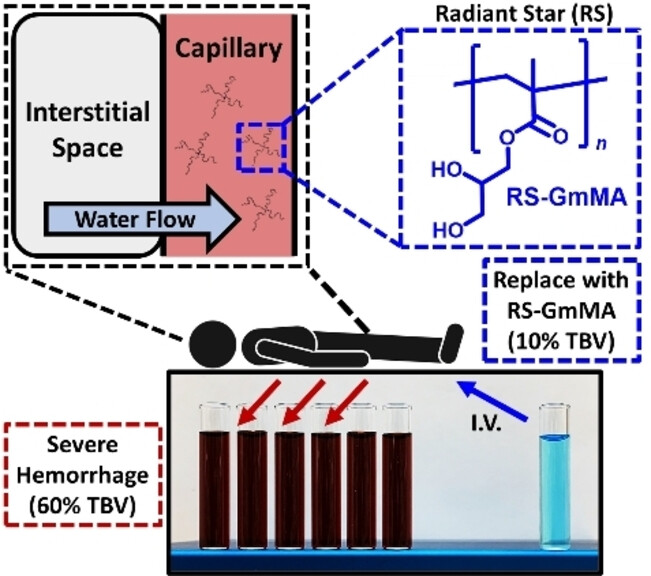
Traumatic injury is a leading cause of global suffering and death. We rationally design polymeric, low volume resuscitants (LVRs) for the prehospital treatment of severe hemorrhagic shock. By varying polymer architecture, Rg, and composition to influence resuscitation, coagulation, and biodistribution, we developed a radiant star polymer that is non-coagulopathic and corrects 60 % total blood volume (TBV) loss when given at only 10 % TBV. This highly portable LVR has profound potential for application in trauma medicine.
Oxygen Evolution Reaction
Elevated Water Oxidation by Cation Leaching Enabled Tunable Surface Reconstruction
- First Published: 15 May 2024
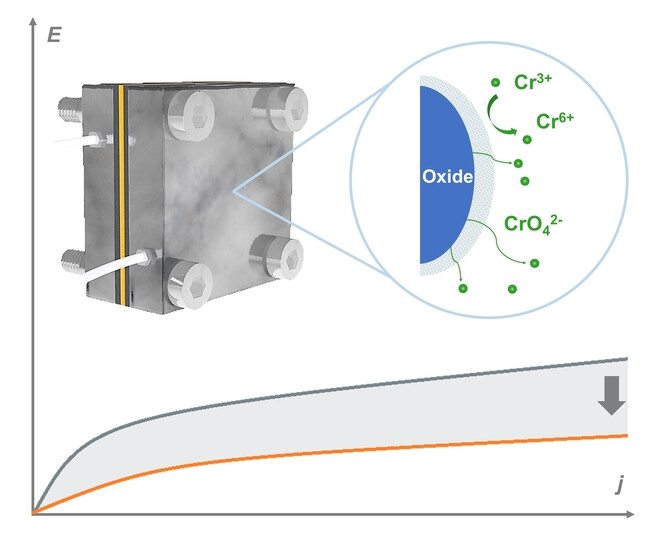
NiFe0.25Cr1.75O4 with a spinel structure, activated by cyclic voltammetry (CV) conditioning, demonstrates superior oxygen evolution reaction (OER) activity among NiFexCr2-xO4 homologue catalysts in alkaline conditions. The activation of the initially inactive spinel is due to surface reconstruction facilitated by Cr leaching, resulting in a core–shell structure with cation vacancies. This catalyst shows exceptional activity and stability in a membrane electrode assembly (MEA) at 80 °C in 1 M KOH.
K Metal Batteries
Alumina – Stabilized SEI and CEI in Potassium Metal Batteries
- First Published: 14 May 2024
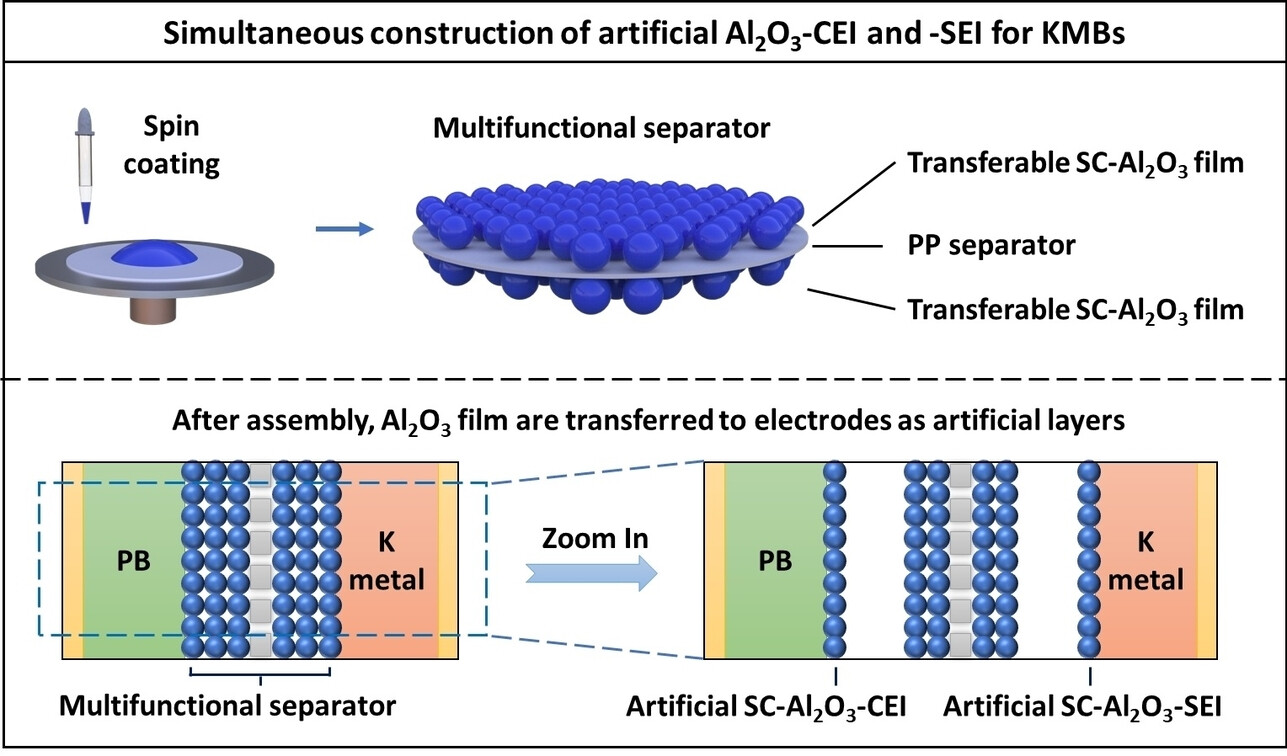
The thin film (10 μm) of alumina (Al2O3) nanopowder is spin-coated on both sides of commercial polypropene separators, then transferred onto both anode and cathode surfaces during cell assembly. This creates both artificial solid-electrolyte interphase (SEI) and cathode electrolyte interface (CEI) that enhance electrochemical kinetics of potassium metal batteries (KMBs).
Polymer Chemistry
Orthogonal Radical and Cationic Single-Unit Monomer Insertions for Engineering Polymer Architectures
- First Published: 17 May 2024
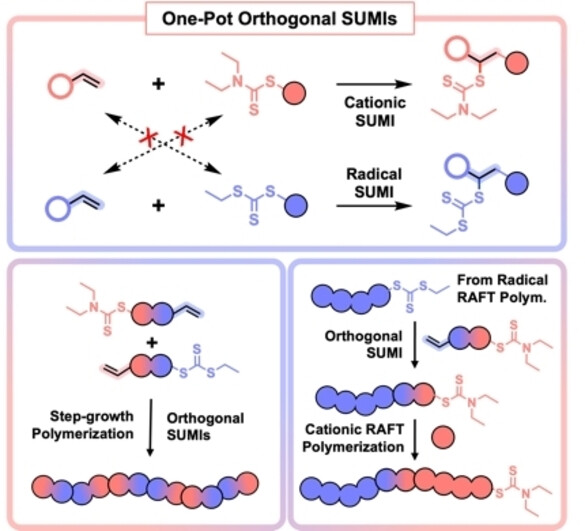
By optimizing the monomer and chain transfer agent pairs and making necessary adjustments to the reaction conditions, we have successfully developed the orthogonal single-unit monomer insertions (SUMIs) technique. This technique allows for the simultaneous implementation of radical and cationic SUMI reactions in a single reaction vessel without any mutual interference.
Protein Modification
A Hydroxylamine-Mediated Amidination of Lysine Residues That Retains the Protein's Positive Charge
- First Published: 17 May 2024

Hydroxylamine and nitrile groups efficiently enable lysine-selective amidination of peptides and proteins. The amidine products retain a positive charge at the modified sites and allow the charge-related properties to be preserved, such as the liquid-liquid phase separation and the interaction with negatively charged DNA to form protein-DNA fibres. The amidine products can undergo multi-site secondary modifications.
Organic Light-Emitting Diodes
Spirobifluorene Trimers: High Triplet Pure Hydrocarbon Hosts for Highly Efficient Blue Phosphorescent Organic Light-Emitting Diodes
- First Published: 16 May 2024
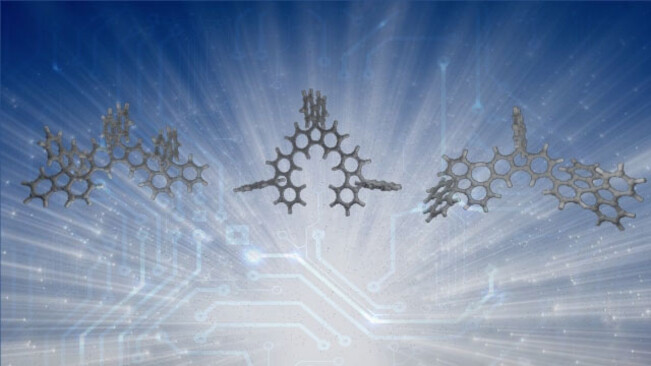
A series of extended pure hydrocarbon (PHC) materials with a high triplet energy, a wide HOMO/LUMO gap and improved thermal properties compared to reported PHCs have been constructed by the assembly of three spirobifluorene fragments. When used as the host in blue phosphorescent OLEDs (PhOLEDs), a high external quantum efficiency (EQE) of 24 % with a low-efficiency roll-off was reached.
Aluminum Batteries
Intermolecular Hydrogen Bonding Networks Stabilized Organic Supramolecular Cathode for Ultra-High Capacity and Ultra-Long Cycle Life Rechargeable Aluminum Batteries
- First Published: 28 March 2024

A novel organic cathode BQQPH with multiple active sites is developed for high-performance rechargeable Al batteries. The six C=O and six C=N groups in BQQPH enables a record ultra-high capacity of 413 mAh g−1. The intermolecular hydrogen bonding network and π–π stacking interactions within BQQPH enable robust structural stability and minimal solubility, yielding an ultra-long lifetime of 100,000 cycles.
Molecular Electronics | Hot Paper
A Systematic Study of Methyl Carbodithioate Esters as Effective Gold Contact Groups for Single-Molecule Electronics
- First Published: 21 May 2024
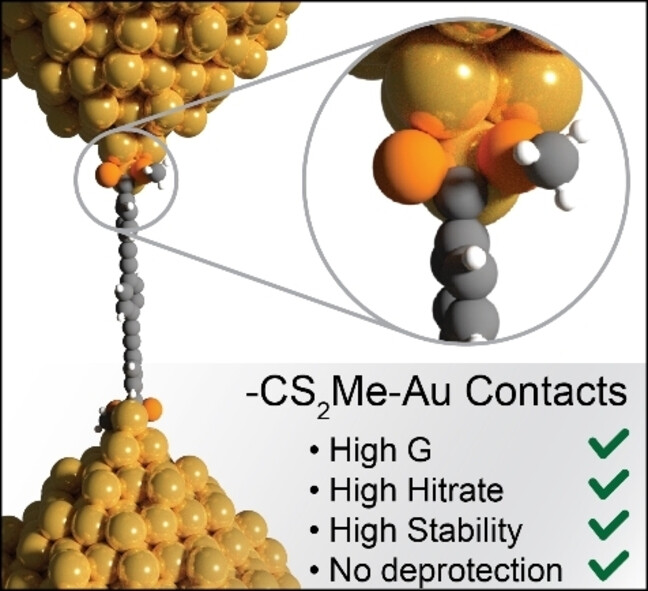
A series of Carbodithioate ester-containing molecular wires have been synthesized and characterized to demonstrate the functionality as a great contact group for molecular electronics with good all-around properties including strong surface binding and high conductance. Raman, XPS and theoretical calculations support the STM-BJ conductance data and rationalize the binding groups’ performance through a strong C=S to Au interaction.
Cell-Penetrating Macrocycles
An Amphiphilic Cell-Penetrating Macrocycle for Efficient Cytosolic Delivery of Proteins, DNA, and CRISPR Cas9
- First Published: 16 May 2024

A cell penetrating macrocycle (CPM) with flexible amine linkages and amphiphilic nature assembles into a micellar-like structure that can passively permeate through the cell membrane. CPM can efficiently transfer fully functioning proteins and genetic materials into the cytosol, independent of size, charge, or complexity.
Near-Infrared Imaging
Carboxylesterase Activatable Molecular Probe for Personalized Treatment Guidance by Analyte-Induced Molecular Transformation
- First Published: 10 May 2024
Biosynthesis
An Enzymatic Prodrug-like Route to Thio and Selenoamides
- First Published: 15 May 2024

A novel enzymatic route to thioamides was elucidated as part of the biosynthesis of the antimetabolite 6-thioguanine in plant-pathogenic bacteria. Unexpectedly, an adenylating enzyme forms an intermediate cysteine-S-conjugate that is cleaved by a designated C−S lyase, a process that mirrors a prodrug approach in cancer therapy.
Single-Molecule Magnets
Spin-State Control in Dysprosium(III) Metallacrown Magnets via Thioacetal Modification
- First Published: 03 May 2024
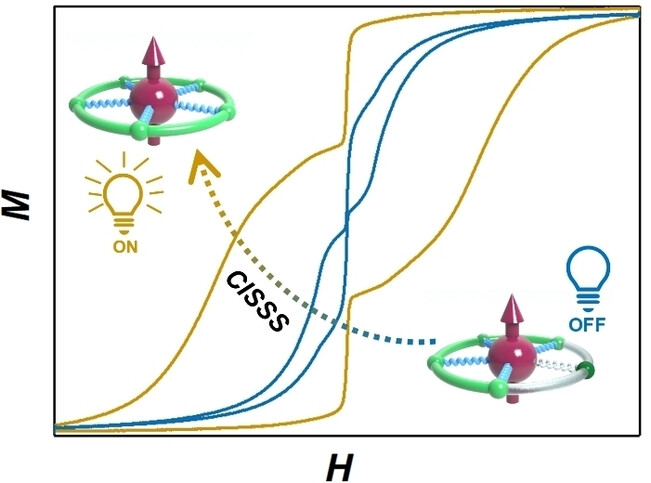
Through thioacetal modification, a 3d–4f metallacrown with a square planar NiII successfully realized chemical-induced coordination-induced spin state switching (CISSS) and the spin state of NiII altering from low-spin S=0 to high-spin S=1. The synergy of CISSS effect and magnetic interactions results in distinct energy splitting and magnetic dynamics.
CO2 Reduction
Boosting the Electroreduction of CO2 to CO by Ligand Engineering of Gold Nanoclusters
- First Published: 16 May 2024

A highly active electrocatalyst for the CO2-to-CO conversion was successfully prepared by the ligand engineering of Au25 nanoclusters with a cation-relaying ligand. The electrocatalytic activity of the synthesized nanoclusters was significantly boosted when the catholyte pH was higher than the pKa of the ligand, demonstrating the cation-relaying effect of the anionic terminal group.
Biomass
Quantification of Native Lignin Structural Features with Gel-Phase 2D-HSQC0 Reveals Lignin Structural Changes During Extraction
- First Published: 13 May 2024
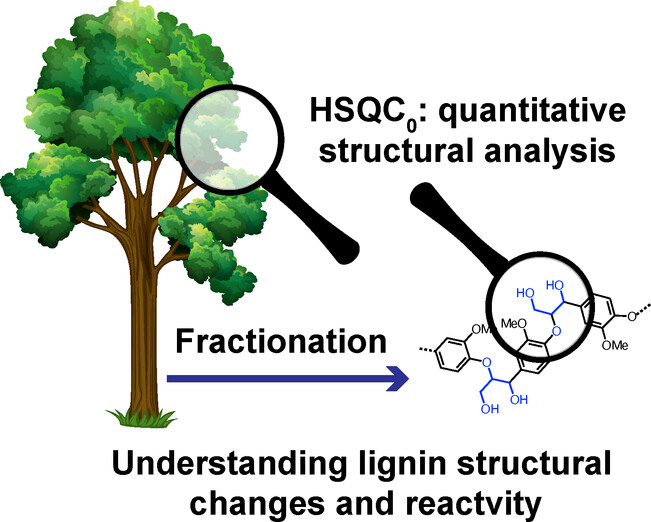
Using a method featuring an extrapolated time-zero Heteronuclear Single-Quantum Coherence Zero (HSQC0) sequence on whole cell walls samples, we can successfully quantify native lignin's structural features. Applying this tool to compare whole cell wall samples to extracted lignin reveals fundamental differences in the apparent linkage distribution within the polymer, which provides insight into lignin's fractionation mechanism.
Photochemistry | Very Important Paper
Solar Azo-Switches for Effective E→Z Photoisomerization by Sunlight
- First Published: 09 May 2024
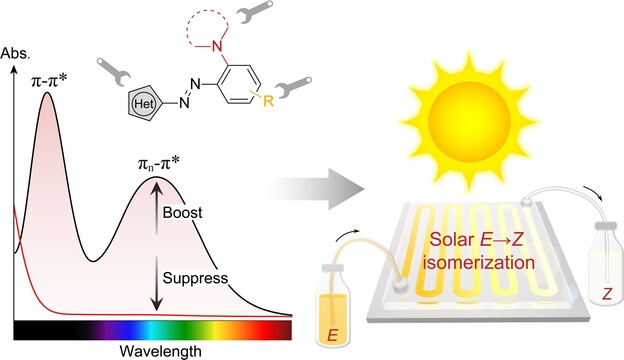
Sunlight-induced isomerization of azo-switches is realized through spectral reshaping. Our sunlight-driven azo-switches absorb across a broad ultraviolet to visible spectrum and achieve 80–90 % E→Z isomerization yields under unfiltered sunlight. Solar switches hold great potential for sustainable light-driven systems and efficient solar energy utilization for applications such as molecular machines, actuators, and molecular solar thermal storage.
Electron Transfer | Hot Paper
Symmetric Electron Transfer Coordinates are Intrinsic to Bridged Systems: An ab Initio Treatment of the Creutz–Taube Ion
- First Published: 01 July 2024
Solid-State Polymer Electrolyte
Opening and Constructing Stable Lithium-ion Channels within Polymer Electrolytes
- First Published: 17 May 2024
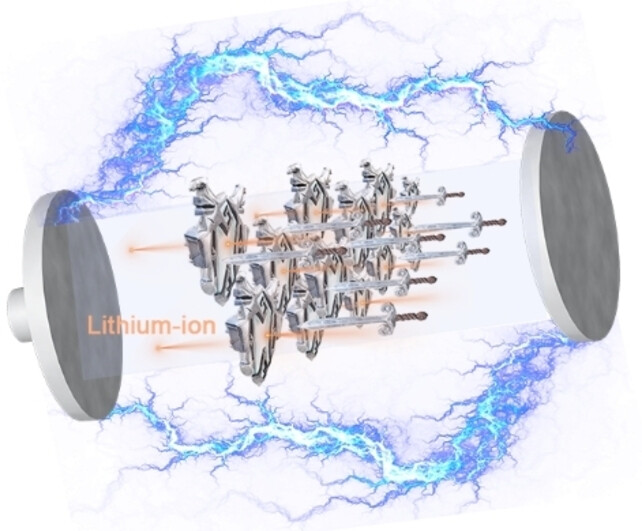
Nowadays, the energy demand is increasing, so non-renewable resources are being consumed rapidly. Therefore, the need for renewable energy storage devices has become more urgent. SSLMBs eagerly evolve into small sizes, light mass, high energy density, good cycling performance, no memory effect, and environmental friendliness. However, the low ionic conductivity and poor interfacial contact hinder SSLMBs’ practical application. In this paper, the flexible SPE of in situ polymerized PAAA opens and stabilizes the Li+ ′highway′ inside the SPE, enhancing Li+ transport, and the oxygen vacancies of SiO2 synergize with the substrate to bind the TFSI−, forming and transporting freer Li+, thus achieving high performance of SSLMBs at room temperature. This study provides ideas for the practical application of SSLMBs.
CO2 Reduction
Boosting Solar-Driven CO2 Conversion to Ethanol via Single-Atom Catalyst with Defected Low-Coordination Cu-N2 Motif
- First Published: 17 May 2024
Solid-State Structures
On Tautomerism and Amphoterism: An In-Depth Structural and Physicochemical Characterization of Ammeline and Some of Its Salts
- First Published: 15 May 2024

The crystal structure of ammeline was solved for the first time nearly 200 years after its discovery by Justus von Liebig. Moreover, several salts of ammeline were synthesized and structurally characterized to study its amphoteric behavior and the influence of the protonation degree on its molecular structure in the solid. Finally, the potential of ammeline as part of insensitive high-energy-density materials was examined.
Polymer Chemistry
Transient Covalent Polymers through Carbodiimide-Driven Assembly
- First Published: 21 May 2024

Transient covalent polymers generated by chemical fuel reactions should serve as useful model systems for nonequilibrium assembly. Here, aqueous poly(anhydrides) have been generated by treatment of dicarboxylic acid monomers with carbodiimides. Molecular weights over 15,000 have been achieved, with polymer lifetimes on the order of hours to weeks. The effect of solvent, reactant concentrations, and temperature has been examined.
Lithium-Sulfur Batteries
Rare Earth Single-Atom Catalysis for High-Performance Li−S Full Battery with Ultrahigh Capacity
- First Published: 18 May 2024
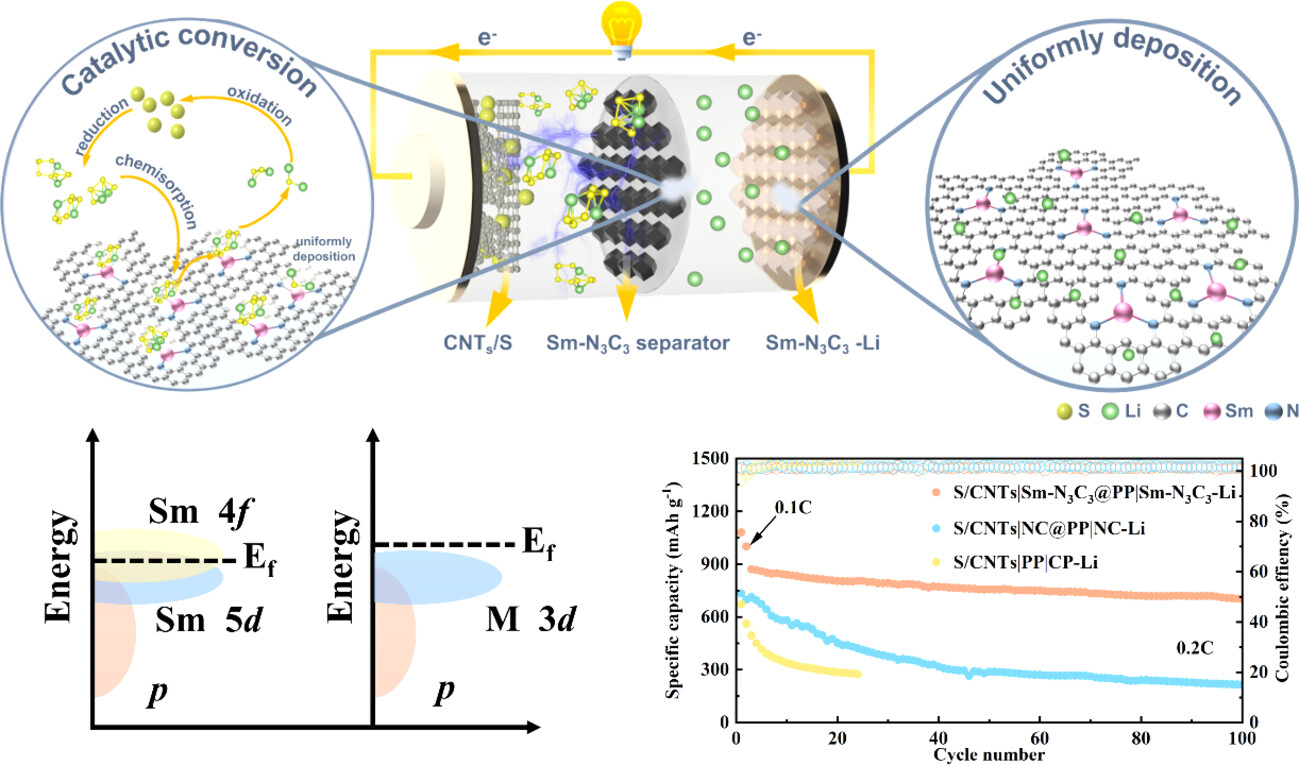
We synthesize the rare earth metal Sm SACs on N-doped carbon substrate. Theoretical calculations and experimental results both indicate that the Sm SACs have the structure of Sm-N3C3. With this design, the 4f orbital polarizes the 5d orbital, the electronic states near dxz/yz increases, and the d orbital achieves a maximized overlap with the p orbital when interacting with LiPSs, resulting in an f-d-p orbital hybridization which provides high activity for accelerating LiPSs reaction kinetics and Li homogeneous deposition.
Electrochemical Sensors
Bridged Pt−OH−Mn Mediator in N-coordinated Mn Single Atoms and Pt Nanoparticles for Electrochemical Biomolecule Oxidation and Discrimination
- First Published: 17 May 2024
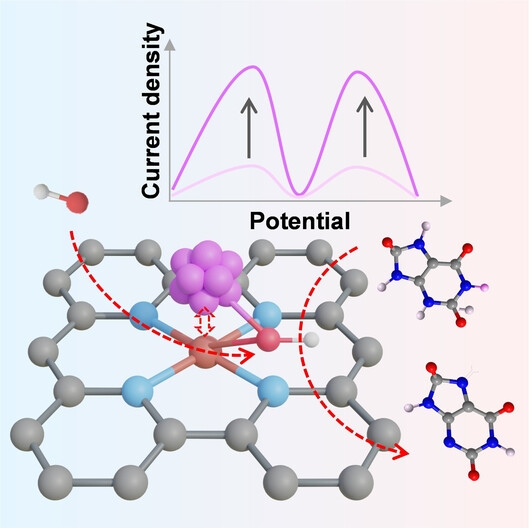
A hybrid catalyst composed of carbon-supported Pt nanoparticles and nitrogen-coordinated Mn single atoms is developed for biomolecule electrooxidation. The direct electron transfer between Pt nanoparticles and Mn single atoms as well as the construction of bridged Pt−OH−Mn mediators during reaction result in a significant improvement in detection and discrimination performances towards dopamine and uric acid.
Recyclable Polymers | Hot Paper
Acetal-thiol Click-like Reaction: Facile and Efficient Synthesis of Dynamic Dithioacetals and Recyclable Polydithioacetals
- First Published: 20 May 2024

Acetal-thiol click-like reaction with high conversion, > acid catalytic acetal-thiol reaction, and high universality, applicable to all typical types of acetals and thiols, was discovered for the facile synthesis of dynamic dithioacetals and readily recyclable polymers without catalyst and solvent. It provides a green and high-efficient reaction for the sustainable development of organic, polymer, material, medical chemistries, etc.
Medicinal Inorganic Chemistry
A Cyclometalated Ruthenium(II) Complex Induces Oncosis for Synergistic Activation of Innate and Adaptive Immunity
- First Published: 21 May 2024
Photocatalysis | Very Important Paper
Oxygen Vacancies Trigger Rapid Charge Transport Channels at the Engineered Interface of S-Scheme Heterojunction for Boosting Photocatalytic Performance
- First Published: 09 May 2024
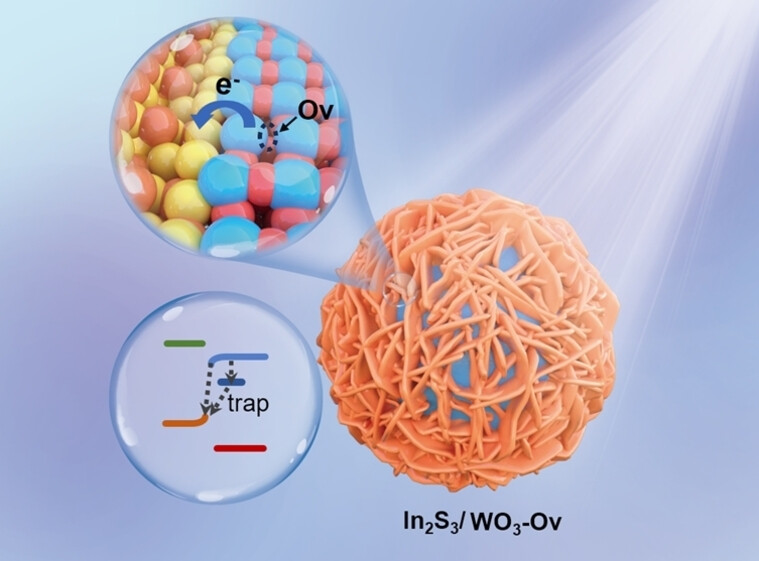
A novel WO3-Ov/In2S3 S-scheme photocatalyst with advanced performance is developed. Rapid charge transport ways triggered by Ovs at the heterointerface are unveiled by femtosecond transient absorption spectroscopy (fs-TAS). The mechanism of Ovs on this S-scheme photocatalyst is revealed by comprehensive characterizations and theoretical calculations.
Nanofiltration Membranes
Fabrication of Coffee-Ring Nanostructured Membranes for Organic Solvent Nanofiltration
- First Published: 20 May 2024

A water-insoluble crystal monomer that dissolved in EtOH/H2O mixed solvent was designed to react with trimesoyl chloride via interfacial polymerization to construct coffee-ring structured the membrane. These features render 2.6-fold enhancement in the effective filtration area of the membrane, and thereby realizing a 2.7-fold boost in the MeOH permeance. Moreover, the fabricated membrane shows distinctive running stability in active pharmaceutical ingredients purification and the ability for concentration of medicines.
Gas Separation | Very Important Paper
Improved Synthesis of Hollow Fiber SSZ-13 Zeolite Membranes for High-Pressure CO2/CH4 Separation
- First Published: 17 May 2024
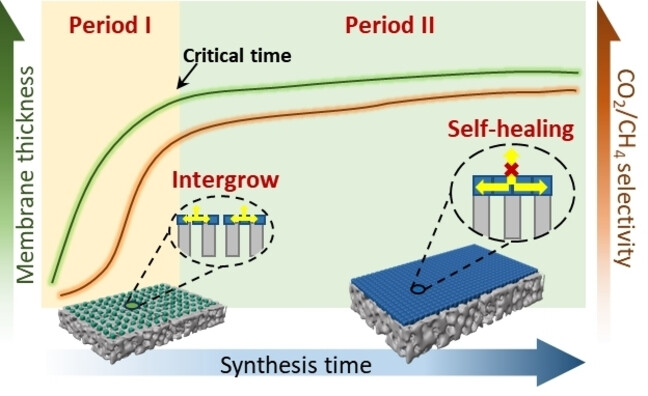
High-silica CHA zeolite is a benchmark membrane material for natural gas upgrading. The membranes were facilely synthesized by adopting the novel FAU-CHA seeds. An excellent CO2/CH4 separation performance was achieved even under pressure up to 6.1 MPa. The successful scaled-up synthesis paves the way for practical applications of zeolite membranes for gas separation.
Perovskites
Considerable Piezochromism in All-Inorganic Zero-Dimensional Perovskite Nanocrystals via Pressure-Modulated Self-Trapped Exciton Emission
- First Published: 18 April 2024
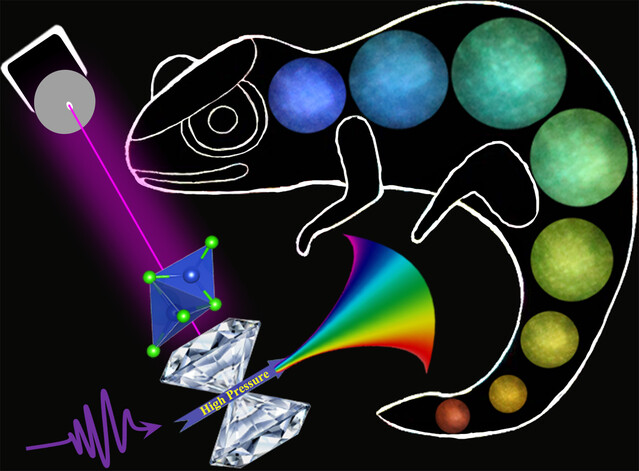
Successive piezochromism with considerable range of 232 nm from blue to red is achieved in all-inorganic zero-dimensional perovskite nanocrystals through pressure-modulated self-trapped exciton emissions, which is very crucial to pressure stability monitoring for facilities working at extreme environments. Furthermore, the highly stable and bright green emission enhanced by over five times is quenched upon decompression.
Allyl-Allyl Coupling | Hot Paper
Allyl-Allyl Coupling Promoted by Catalyst Systems with two Palladium Atoms – A Plethora of Potentially Pericyclic Processes
- First Published: 06 May 2024
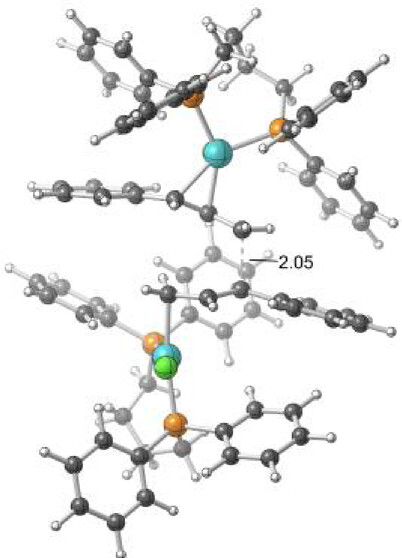
A plethora of potential metal-supported pericyclic reactions in a palladium promoted allyl coupling reaction was explored with quantum chemical computations, with results implying that one should perhaps consider such processes regularly, but do so with caution. The results of these calculations lead to a revision of the mechanism for a recently reported allyl coupling reaction that makes use of an unusual outer-sphere reductive elimination.
Electrochemistry | Very Important Paper
Upgrading Electrolyte Antioxidant Chemistry by Constructing Potential Scaling Relationship
- First Published: 14 May 2024
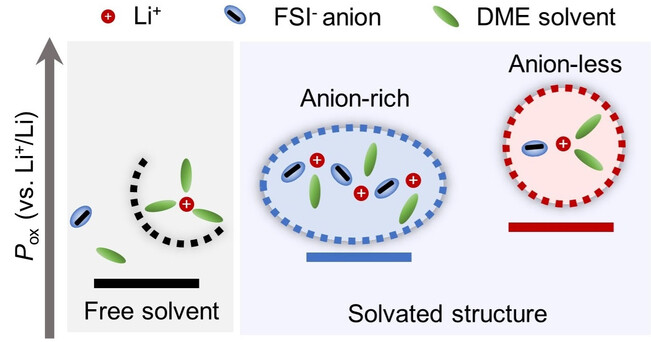
An external method to quantitatively analyze the oxidation stability of electrolyte systems is proposed. It was shown that “anion-less” solvated structures are more resistant to oxidation than “anion-rich” ones owing to the weakening of the anion polarization effect. These findings provide a molecular perspective for electrolyte design in rechargeable high-energy Li-metal Batteries.
Fluorescent Probes
Core-Alkynylated Fluorescent Flippers: Altered Ultrafast Photophysics to Track Thick Membranes
- First Published: 17 May 2024
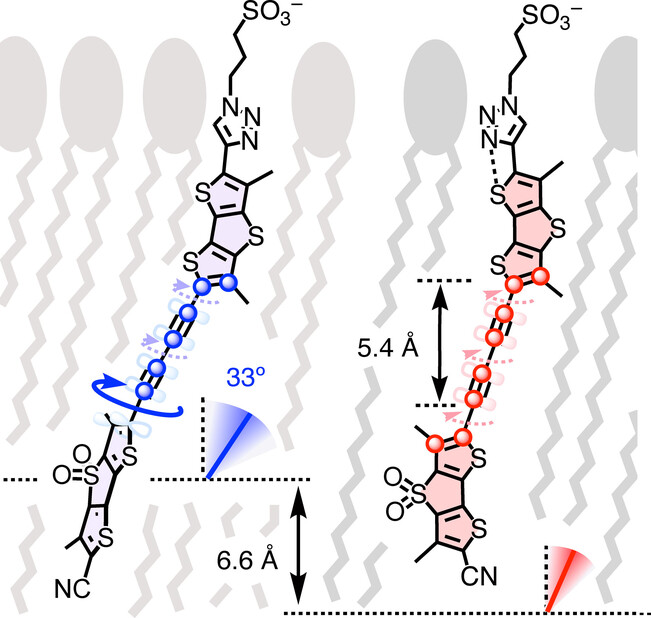
Elongated flipper probes with one and two alkynes in the core merge flipper- and rotor-like behavior to take photophysical properties to a new level of sophistication and introduce hydrophobic matching with one single leaflet as operational strategy to mechanosensitively track bilayer membranes by their thickness.
Ammonia Electrosynthesis | Hot Paper
Cu1−Fe Dual Sites for Superior Neutral Ammonia Electrosynthesis from Nitrate
- First Published: 21 May 2024
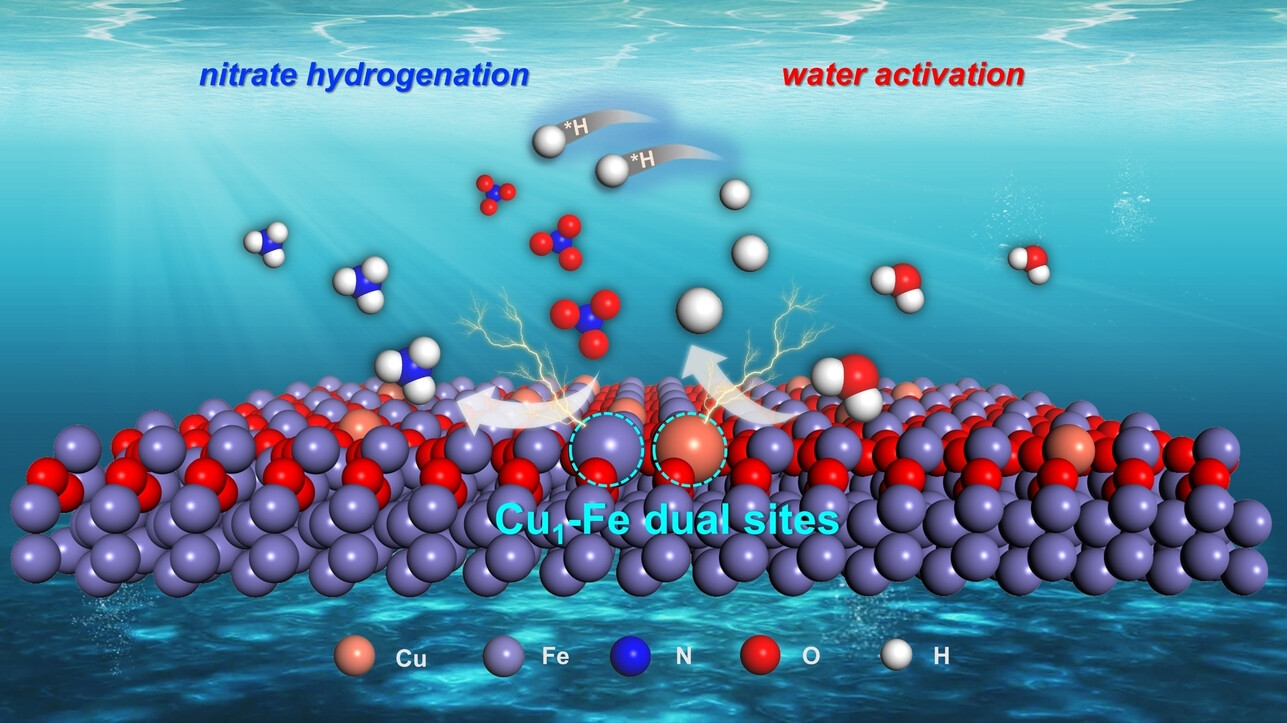
Single-atom Cu is anchored on the oxide layer of Fe@Cu1FeOx to form Cu1-Fe dual-sites. The synergistic effect of enhanced NO3− adsorption on Fe sites and the strengthened water activation on Cu sites decreases the energy barrier for the rate-determining step of *NO hydrogenation, resulting in superior electroreduction of nitrate to ammonia.
Polycyclic Compounds | Hot Paper
Orchestrated Octuple C−H Activation: A Bottom-Up Topology Engineering Approach toward Stimuli-Responsive Double-Heptagon-Embedded Wavy Polycyclic Heteroaromatics
- First Published: 17 May 2024
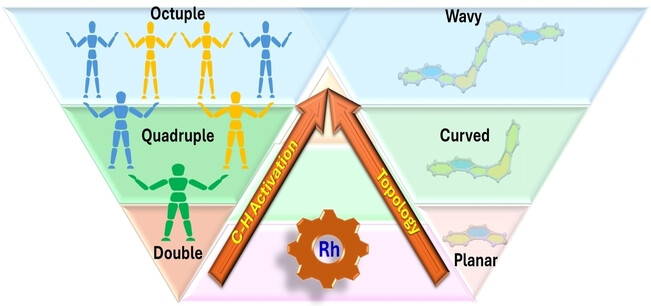
An intriguing bottom-up molecular engineering approach is revealed toward single-step synthesis of a novel class of double heptagon-containing N-rich laterally-fused stimuli-responsive polycyclic heteroarenes, leveraging a highly step-economic octuple C−H activation manifold for simultaneous creation of hexagon-containing planar and heptagon-containing nonplanar skeletons on readily available triazolium template.
Electrochemistry
Are Redox-Active Centers Bridged by Saturated Flexible Linkers Systematically Electrochemically Independent?
- First Published: 21 May 2024
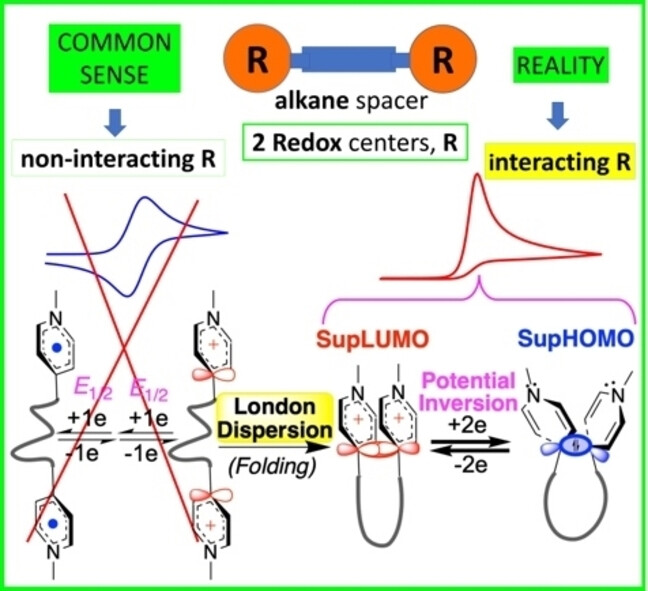
Electrochemistry textbooks teach that the behavior of charged redox centers bound by saturated linkers is essentially governed by electrostatics. We show that for short alkanes and pyridiniums, as Coulombic and through-bond interactions become ineffective, reductive cyclomer formation is governed by London dispersion and σ-type overlap of 2pz atomic orbitals of the Cγ atoms of electrophoric ends rather than by electron spin-spin interaction.
CO2 Reduction | Very Important Paper
Anion Modulation of Ag-Imidazole Cuboctahedral Cage Microenvironments for Efficient Electrocatalytic CO2 Reduction
- First Published: 20 May 2024
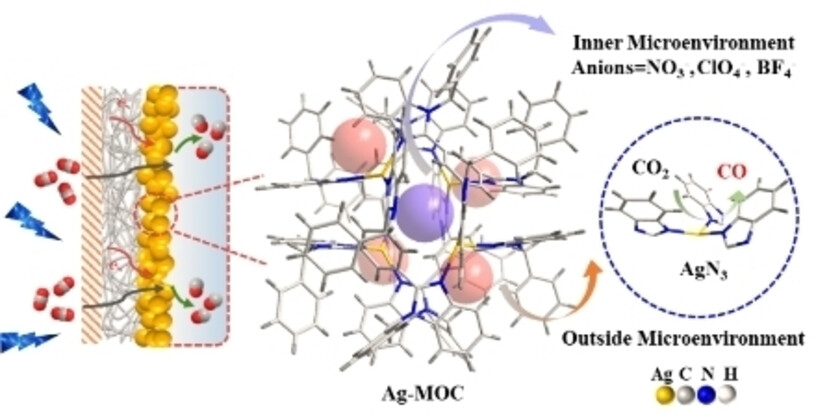
We have fabricated three Ag4L4 type cuboctahedral coordination cages (Ag-MOC-X, X=NO3, ClO4, BF4) which exhibit inner/outside coordination microenvironments, and metal/nonmetal active sites for synergistic enhancement of selectivity for the electrocatalytic reduction of CO2 to CO in pH-universal electrolytes.
Zinc-Ion Batteries
Dynamic Covalent Bonds Regulate Zinc Plating/Stripping Behaviors for High-Performance Zinc Ion Batteries
- First Published: 17 May 2024
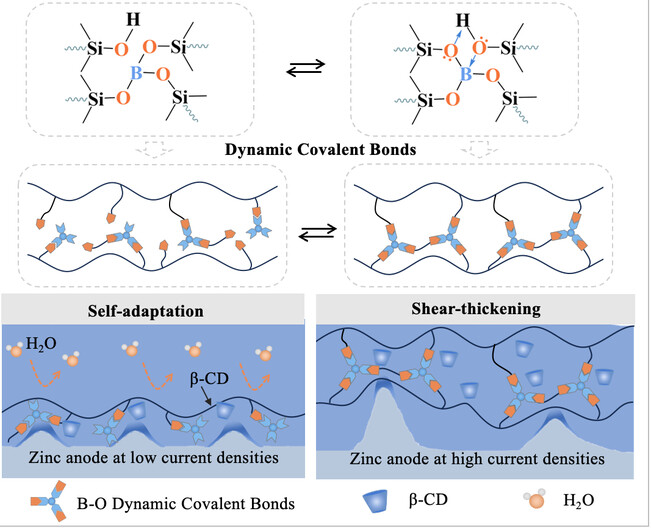
An intelligent PBSC interface is designed on the zinc anode with self-adaptation and shear-thickening properties by blending polyborosiloxane (PBS) and β-cyclodextrin (β-CD). The reversible association/disassociation of dynamic B−O bonds enhances local structural integrity, effectively impeding continuous zinc dendrite growth and mitigating hydrogen evolution, ensuring stable zinc plating/stripping behaviors with enhanced cycling performance.
Lithium-Sulfur Battery
Integrated Design for Discrete Sulfur@Polymer Nanoreactor with Tandem Connection as Lithium–Sulfur Battery Cathodes
- First Published: 23 May 2024
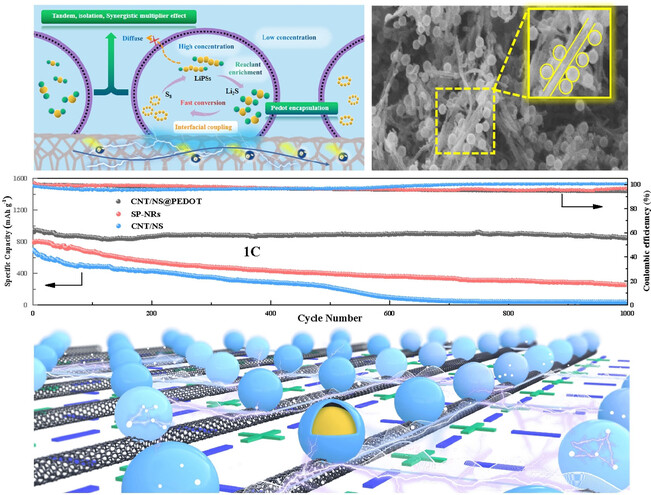
Inspired by the concept of transistor integration, an integrated structure with tandem connection is constructed by confining NS in conductive polymer reaction chambers, forming an interface of discrete nanoreactor units bonded on CNTs. Meanwhile, excellent performance is achieved through tandem connection with CNTs, isolation with PEDOT coating, and synergistic multiplicative effects among SP-NRs.
Sodium-Ion Battery
Industrial-Scale Hard Carbon Designed to Regulate Electrochemical Polarization for Fast Sodium Storage
- First Published: 14 May 2024
Heterogeneous Catalysis | Hot Paper
Tuning Adsorbate-Mediated Strong Metal-Support Interaction by Oxygen Vacancy: A Case Study in Ru/TiO2
- First Published: 14 May 2024
Organic Solar Cells | Hot Paper
Multi-component Copolymerized Donors enable Frozen Nano-morphology and Superior Ductility for Efficient Binary Organic Solar Cells
- First Published: 18 May 2024
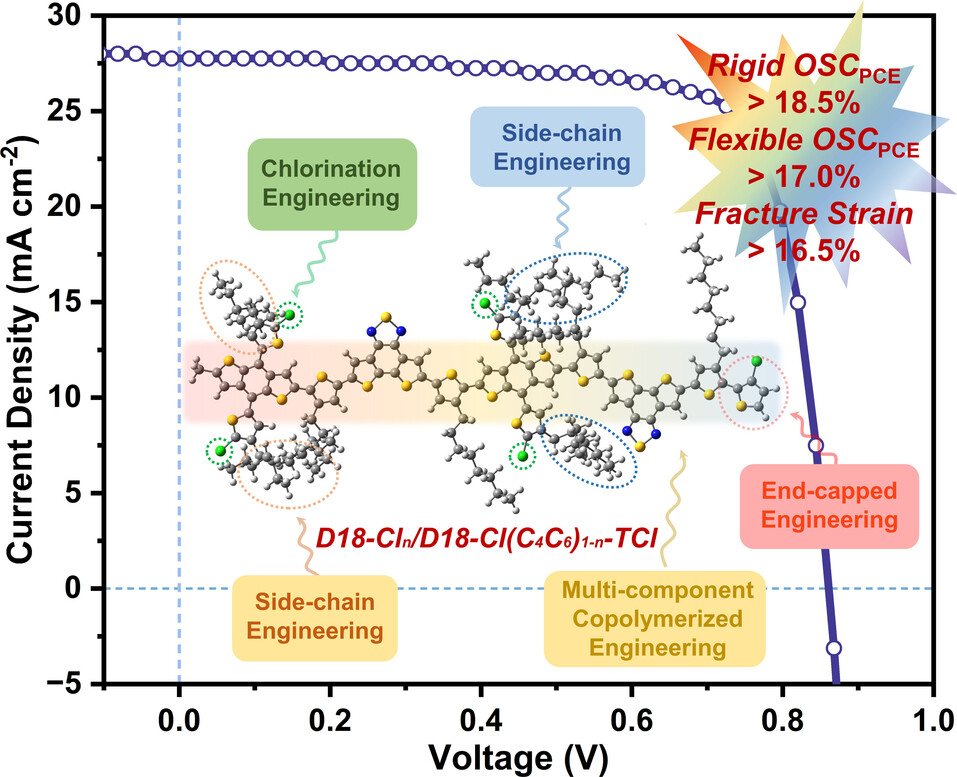
A series of efficient multi-component copolymerized donors (MCDs) P10.8/P20.2, P10.8/P20.2-TCl, P10.7/P20.3-TCl, and P10.6/P20.4-TCl were synthesized, and excellent efficiencies in both rigid (18.53 %) and flexible (17.03 %) OSCs along with fracture strain in pristine film (16.59 %) for P10.8/P20.2-TCl were achieved.
Natural Products
A Cytochrome P450 Enzyme Catalyses Oxetane Ring Formation in Paclitaxel Biosynthesis
- First Published: 07 May 2024

Oxetane synthase (TmCYP1), a novel cytochrome P450 enzyme from Taxus x media cell cultures, is functionally characterized to efficiently catalyze oxetane ring formation in paclitaxel biosynthesis. A possible reaction mechanism was proposed on the basis of substrate-feeding and isotope labelling experiments together with density functional theory calculations.
Electrocatalysis | Very Important Paper
Energy-Efficient Co-production of Benzoquinone and H2 Using Waste Phenol in a Hybrid Alkali/Acid Flow Cell
- First Published: 16 May 2024
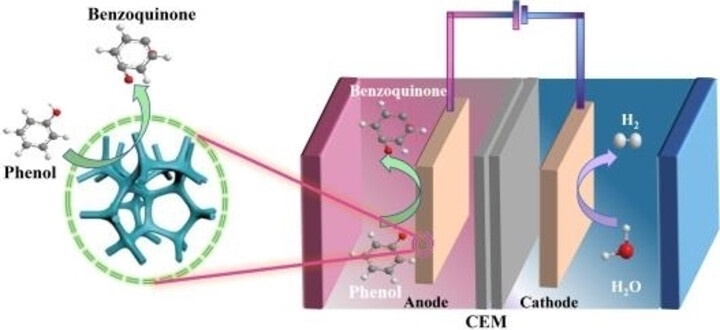
In this study, a heterogeneous nano-electrocatalyst consisting of Ni9S8-Ni15O16/NF was synthesized using a partial vulcanization method for composition design. The resulting catalyst demonstrated exceptional electrochemical oxidation performance of phenol (EOP). The self-assembled alkali-acid hybrid electrolytic cell can operate continuously for more than 300 hours at a fixed potential of 0.9 V. At the same time, through the design and equipment integration of the alkali-acid electrolytic cell, for the very first time, the anodic oxidation of phenol organic pollutants with the cathodic hydrogen production.
CO2 Reduction | Hot Paper
Covalent Organic Framework with Donor1-Acceptor-Donor2 Motifs Regulating Local Charge of Intercalated Single Cobalt Sites for Photocatalytic CO2 Reduction to Syngas
- First Published: 21 May 2024
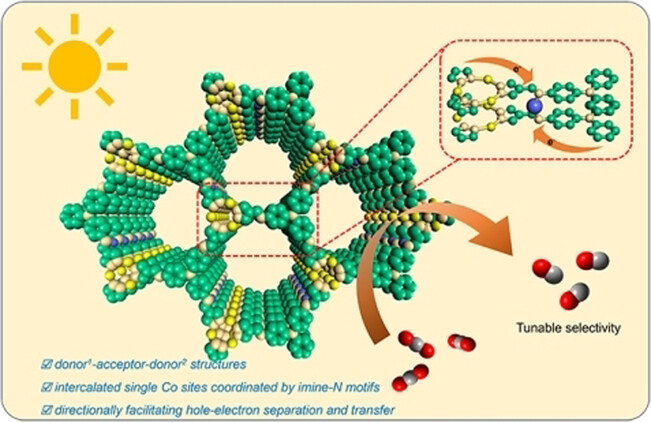
The interlayer Co-imine N motifs have been designed by using trinuclear copper-based imine-COFs with distinct electronic moieties for photocatalytic CO2 reduction. Amongst, Co/Cu3-TPA-COF exhibited exceptional activity and tunable syngas (CO/H2) by various bipyridines. The interlayer Co-imine N motifs on the donor1-acceptor-donor2 structure can induce the oriented electron transfer from dual donors to the Co center, promoting CO2 reduction.
Labeling Technologies
An In-Situ-Tag-Generation Proximity Labeling Technology for Recording Cellular Interactions
- First Published: 03 May 2024

We propose an “in-situ-tag-generation mechanism” and develop the GalTag technology based on galactose oxidase (GAO) for recording cellular interactions. GAO mounted on bait cells can in situ generate bio-orthogonal aldehyde tags as interaction reporters on prey cells. GalTag is unique in that it eliminates the need to add tag molecules, resulting in the ability to record bait footprints in three-dimensional biological solid regions.
Electrosynthesis
Surfactant Directionally Assembled at the Electrode-Electrolyte Interface for Facilitating Electrocatalytic Aldehyde Hydrogenation
- First Published: 22 May 2024
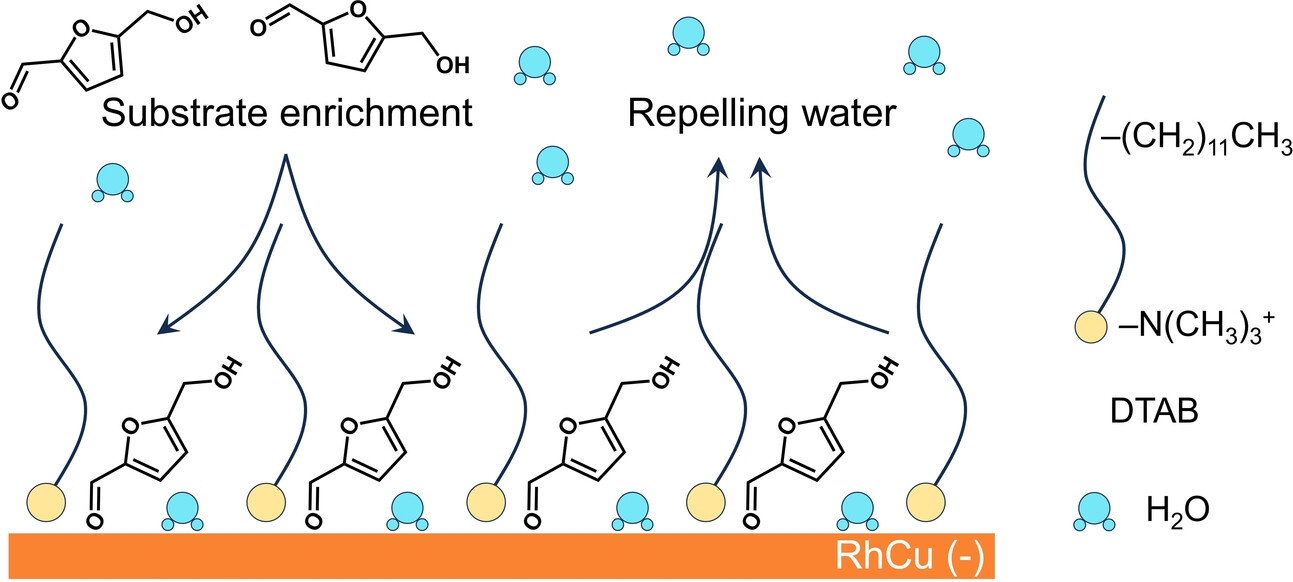
Quaternary ammonium cationic surfactant-modified electrode-electrolyte interfaces have been designed for cathodic catalytic conversion of 5-hydroxymethylfurfural to 2,5-bis(hydroxymethyl)furan. Under the application potential conditions, the surfactant undergoes a conformational transition from random distribution to directional assembly. This microenvironmental regulation strategy achieves efficient hydrogenation of HMF and inhibits hydrogen evolution reaction.
Metal Recycling
Sequential Selective Dissolution of Coinage Metals in Recyclable Ionic Media
- First Published: 14 May 2024

Coinage metals Cu, Ag, and Au can be sequentially dissolved from waste electrical and electronic equipment using green oxidants: aqueous H2O2 and Oxone in biomass-derived sustainable and recyclable ionic media: lactic acid and deep eutectic solvent made of choline chloride and urea. This sequential one metal – one method recycling approach closely follows efforts for the security of supply and objectives of circular economy and sustainable development.
Micropollutant Removal
Acyclic Cucurbit[n]uril Receptors Function as Solid State Sequestrants for Organic Micropollutants
- First Published: 25 April 2024
![Acyclic Cucurbit[n]uril Receptors Function as Solid State Sequestrants for Organic Micropollutants](/cms/asset/76dc3cb9-d68b-4785-958f-3d2b0c50f7f2/ange202407169-toc-0001-m.jpg)
In previous work, we showed that water soluble acyclic cucurbit[n]uril hosts function well as in vivo sequestrants for biologically active substances. Herein, we synthesize a series of water insoluble 3,6-dimethylcatechol walled acyclic CB[n] and demonstrate their function as solid state sequestrants for organic micropollutants.
Bromabscheidung
Eine Alkin-verbrückte kovalent organische Gerüstverbindung mit interaktiven Bindungstaschen für das Einfangen von Brom
- First Published: 13 May 2024
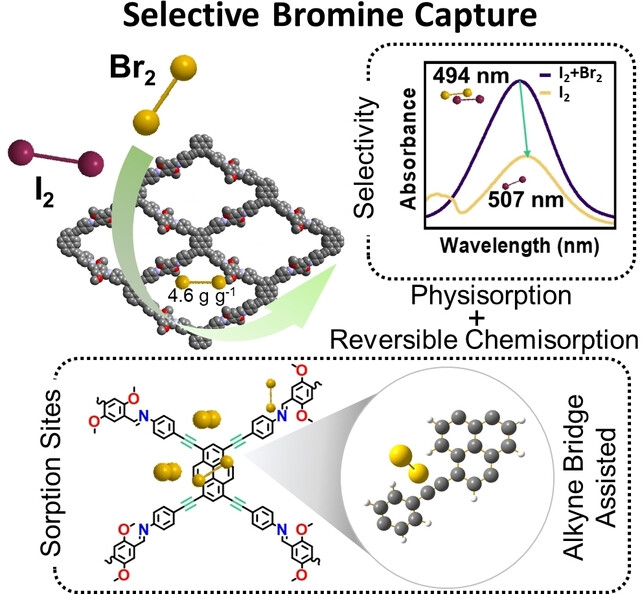
Brom, ein nützliches, wenn auch toxisches Halogen, kann mit I2 in dem Gleichgewichtsprodukt IBr koexistieren. Hier schlagen wir eine neue kovalent organische Gerüstverbindung (COF) mit Dreifachbindungen, einer elektronenreichen Pyreneinheit und Heteroatomen (N-Stellen) vor, um selektiv Br2 gegenüber I2 aufzunehmen. Die Beteiligung der Dreifachbindung kann als kombinierter Physisorptions- und Chemisorptionsprozess eingestuft werden, was zu einer einzigartigen Methode für die Bindung von Br2 führt.
Enzymmechanismen
Kopplung von CO2-Reduktion und Acetyl-CoA-Bildung: Die Rolle eines CO-fangenden Tunnels in der enzymatischen Katalyse
- First Published: 14 May 2024
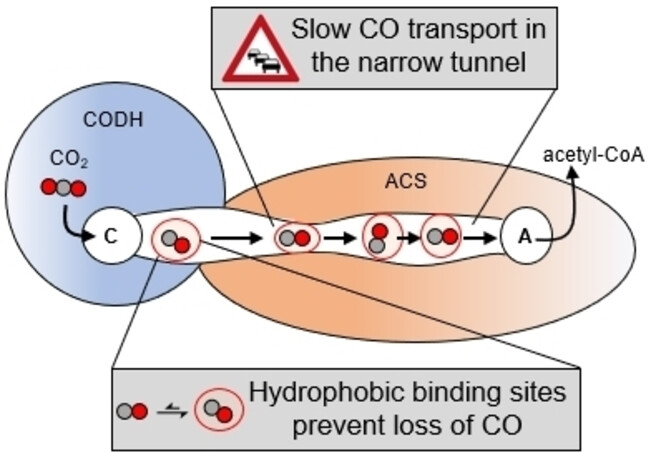
Der bifunktionale CO-Dehydrogenase (CODH)/Acetyl-CoA-Synthase (ACS)-Komplex verbindet die Katalyse an zwei Stellen, die durch einen Tunnel verbunden sind, der das erzeugte CO transportiert. Hydrophobe, CO-affine Stellen innerhalb des Tunnels wirken eher wie eine Eimerkette als wie eine einfache Röhre. Unsere Ergebnisse für den Tunnelumbau legen nahe, dass sich der Tunnel eher zur CO-Bindung als zur Maximierung des Umsatzes entwickelt hat.
Enantioselektive Elektrokatalyse | Hot Paper
Cobaltaelektro-katalysierte C−H-Aktivierung für zentrale und axiale doppelte Enantioinduktion
- First Published: 17 May 2024

Die Cobaltaelektro-katalysierte C−H-Aktivierung wurde entwickelt, um den Zugang zu Molekülen mit zentraler und axialer Chiralität mit Enantiomerenüberschüssen bis zu >99 % und Diastereomerenverhältnissen von >20 : 1 zu erzielen. Die Cobaltaelektro-Katalyse wurde durch eine hoch-effiziente Wasserstoffbildungsreaktion ermöglicht.
Zuschrift
Biocatalysis | Very Important Paper
Biosynthesis of Strained Amino Acids by a PLP-Dependent Enzyme through Cryptic Halogenation
- First Published: 22 March 2024

Halogenases enable organisms to alter the reactivity of a biological substrate by enzymatically installing a leaving group. In this communication, we discover a bacterial gene cluster which uses a pyridoxal 5′-phosphate-dependent enzyme to form strained carbocyclic amino acids from halogenated substrates. We also examine the role of the non-canonical amino acid pazamine in plant-bacterial interactions.
Asymmetric Catalysis | Hot Paper
Ionic Hydrogen Bond-Assisted Catalytic Construction of Nitrogen Stereogenic Center via Formal Desymmetrization of Remote Diols
- First Published: 14 May 2024
Amyloid Degradation | Hot Paper
Unimolecular Chemiexcited Oxygenation of Pathogenic Amyloids
- First Published: 17 May 2024
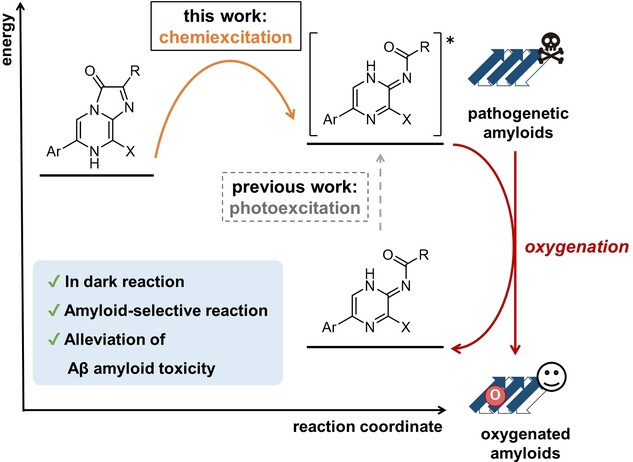
Amyloid degradation without photoirradiation. Cypridina luciferin analogs, dmCLA-X, are chemiexcited through autoxidation, leading to amyloid-selective oxygenation in the dark. Oxygenated Aβ furnishes reduced aggregation potency and cytotoxicity. The chemiexcitation strategy may be effective in treating amyloidosis by alleviating pathogenetic amyloids accumulated deep in the brain, where light hardly reaches.
Ligand Design
H8-BINOL-Derived Chiral η6-Benzene Ligands: New Opportunities for the Ruthenium-Catalyzed Asymmetric C−H Activation
- First Published: 28 April 2024

A class of (S)-H8-BINOL-derived chiral η6-benzene ligands has been developed, which can coordinate with ruthenium(II) highly site-selectively.The related chiral ruthenium(II) catalysts proved highly effective for the asymmetric C−H activation of N-sulfonyl ketimines with alkynes, affording a series of chiral spirocyclic sultams in up to 99 % yield with up to >99 % ee.
Biocatalysis | Very Important Paper
Engineered Phenylalanine Ammonia-Lyases for the Enantioselective Synthesis of Aspartic Acid Derivatives
- First Published: 07 May 2024

A structure-based engineering of phenylalanine ammonia-lyase from Planctomyces brasiliensis (PbPAL) is conducted for preparative-scale enantioselective hydroaminations of previously inaccessible yet synthetically useful substrates, such as amide- and ester-containing fumaric acid derivatives. Our engineered PbPALs exhibit exclusive α-regioselectivity, high enantioselectivity, and broad substrate scope. The potential utility of the developed biocatalysts is demonstrated by a preparative-scale hydroamination yielding tert-butyl protected l-aspartic acid, widely used as intermediate in peptide solid-phase synthesis.
Sustainable 3D Printing | Hot Paper
A General Strategy for Sustainable 3D Printing Based on A Multifunctional Photoinitiator
- First Published: 13 May 2024
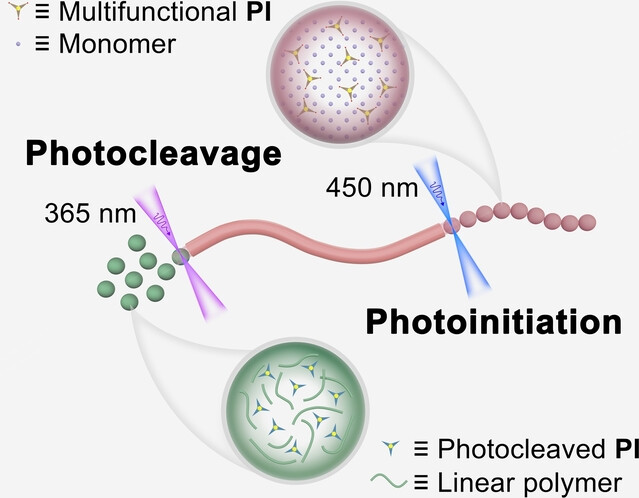
A novel multifunctional photoinitiator that offers precise control over light-induced polymerization initiation (450 nm) and material degradation (365 nm) is developed. Upon degradation, the resulting linear polymers can be easily re-dissolved in their corresponding monomer and re-cured. Furthermore, this photoinitiator facilitates the successful 3D printing of intricate and precise structures. This represents a promising general strategy for the development of recyclable photoresins for 3D printing.
Homogeneous Catalysis
Enantio- and Z-Selective δ-Hydroarylation of Aryl-Substituted 1,3-Dienes via Rh-Catalyzed Conjugate Addition
- First Published: 16 May 2024
Prodrugs
Polymeric Prodrugs using Dynamic Covalent Chemistry for Prolonged Local Anesthesia
- First Published: 17 June 2024

Tetrodotoxin (TTX) polymeric prodrugs were developed utilizing dynamic covalent chemistry. The reversible reaction between the 1,2 diol on TTX and phenylboronic acid enabled ex vivo TTX encapsulation with high efficiency (EE%, >90 %) and sustained TTX release in vivo. The resultant TTX sustained release depots induced prolonged local anesthesia with minimal systemic toxicity.
Electrochemistry
Electrochemical Generation of Aryl Radicals from Organoboron Reagents Enabled by Pulsed Electrosynthesis
- First Published: 16 May 2024
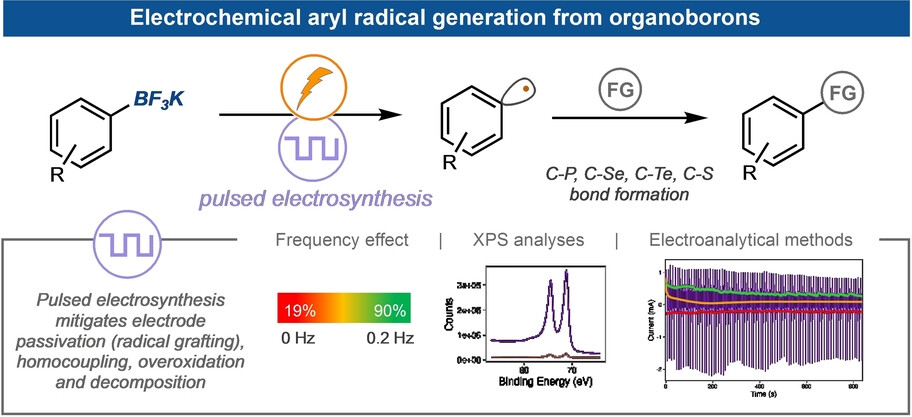
Pulsed electrosynthesis efficiently converts aromatic organoboron reagents to aryl radicals. Mechanistic studies reveal that pulsed electrosynthesis overcomes challenges like radical grafting/passivation, homocoupling, overoxidation, and decomposition. This electro-oxidative method enables straightforward functionalization of aromatic organoboron reagents to form aryl C−P, C−Se, C−Te, and C−S bonds.
Organic Synthesis | Hot Paper
β-Phenethylamine Synthesis: N-Pyridinium Aziridines as Latent Dual Electrophiles
- First Published: 03 May 2024
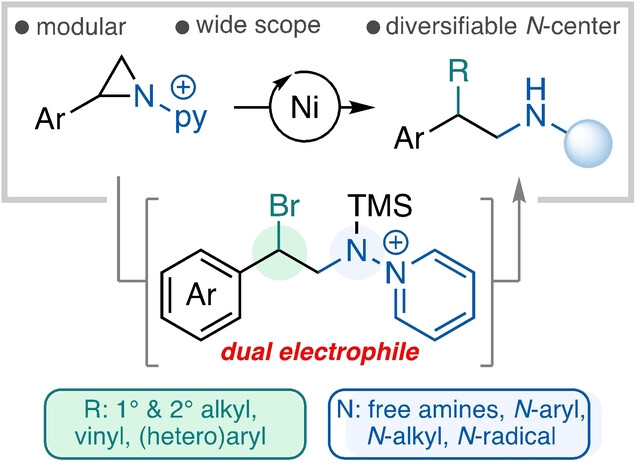
N-pyridinium aziridines serve as latent dual electrophiles for the synthesis of β-phenethylamines. Ni-catalyzed aziridine ring opening with organozinc nucleophiles affords a diverse family of β-functionalized phenethylaminopyridinium salts which upon reductive N−N cleavage provides access to rapid and modular molecular assembly of β-phenethylamines.
Hydrogen Storage
Strong Swelling and Symmetrization in Siliceous Zeolites due to Hydrogen Insertion at High Pressure
- First Published: 15 May 2024
Polyoxometalates | Hot Paper
Non-Covalent and Covalent Binding of New Mixed-Valence Cage-like Polyoxidovanadate Clusters to Lysozyme
- First Published: 06 June 2024
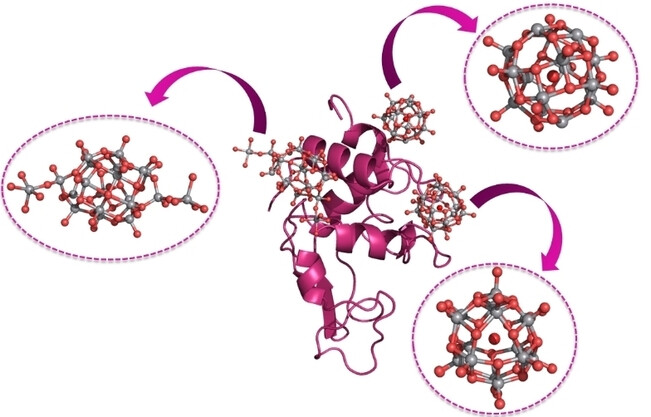
In NaCl solutions and in the presence of lysozyme, the potential drug [VIVO(acetylacetonato)2] undergoes ligand exchange, partial oxidation of VIV to VV producing unexpected mixed-valence polyoxidovanadates with composition [V15O36(OH2)]5−, [V15O33(OH2)]+ and [V20O51(OH2)]n−, which bind covalently and non-covalently to the protein surface.




